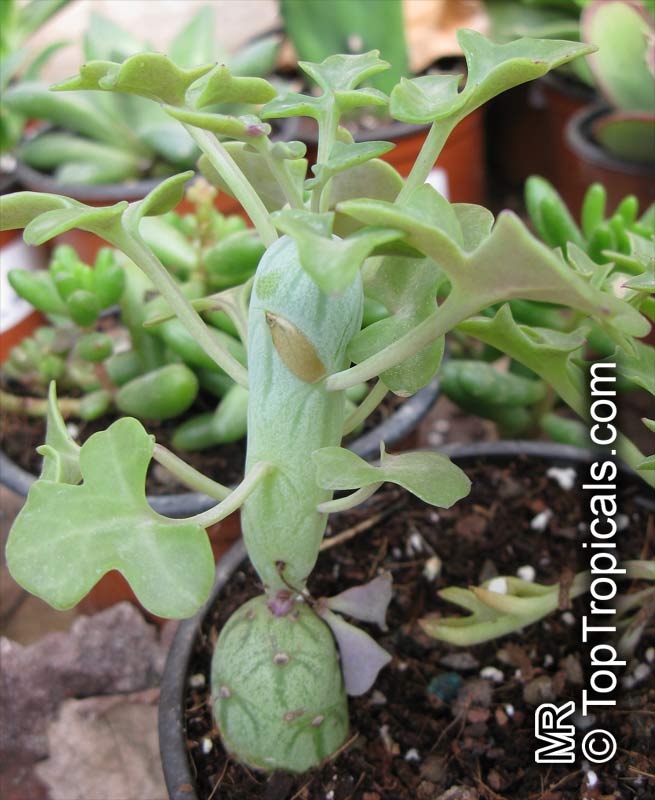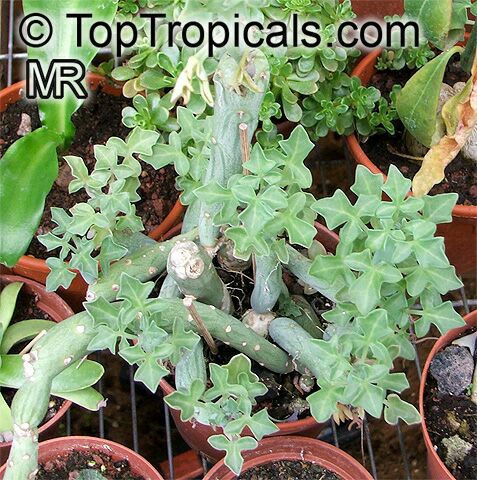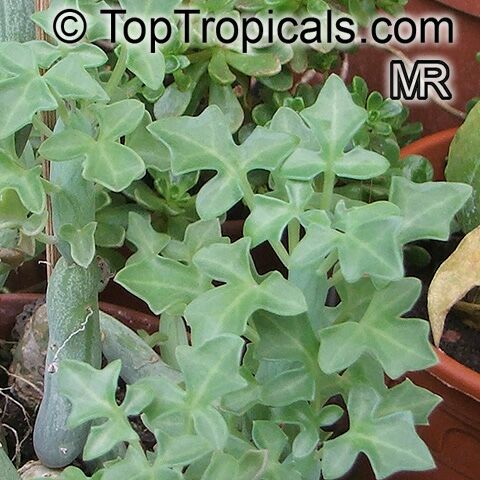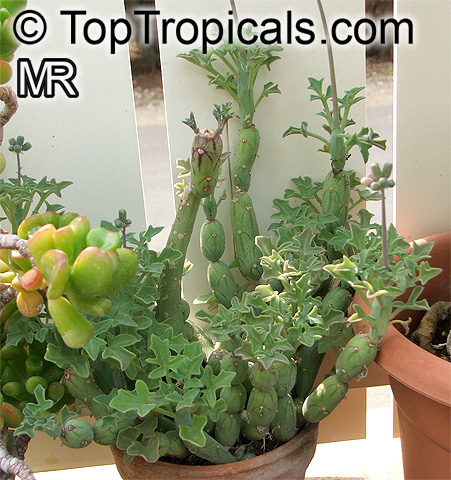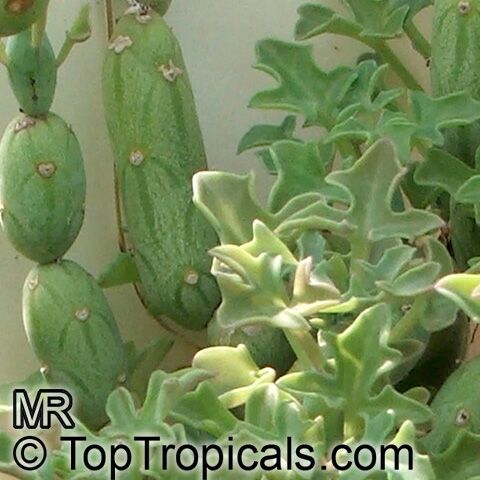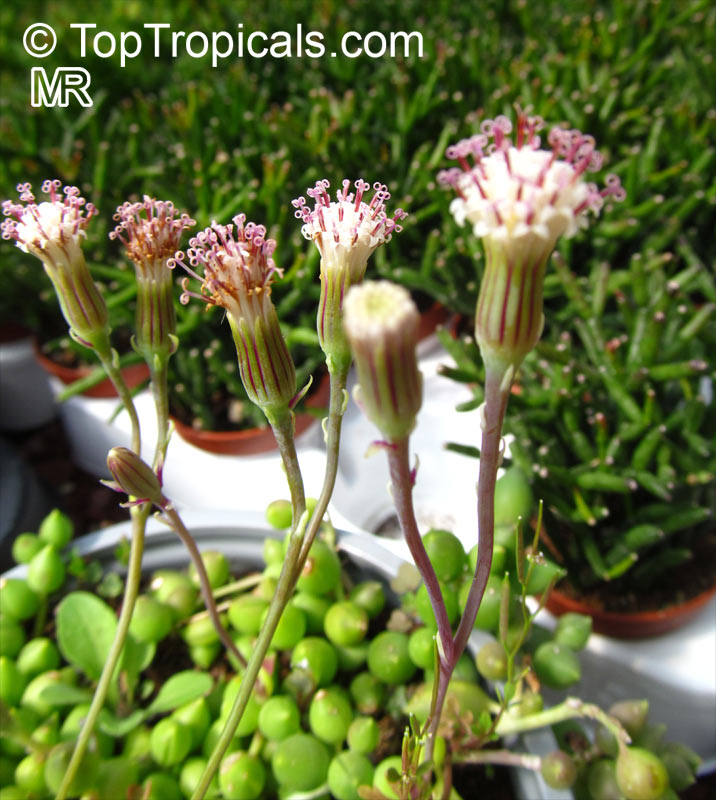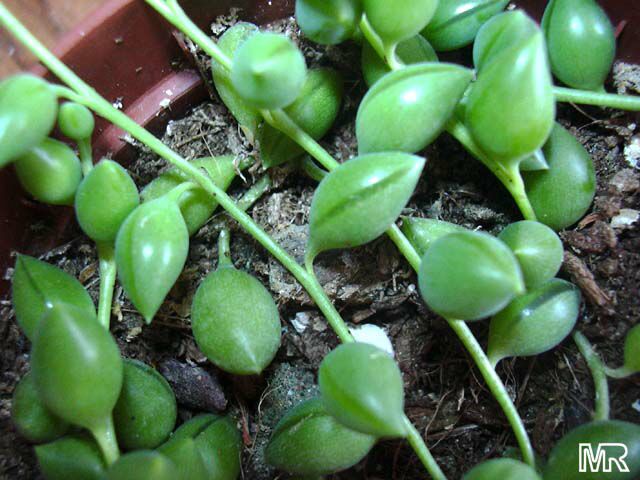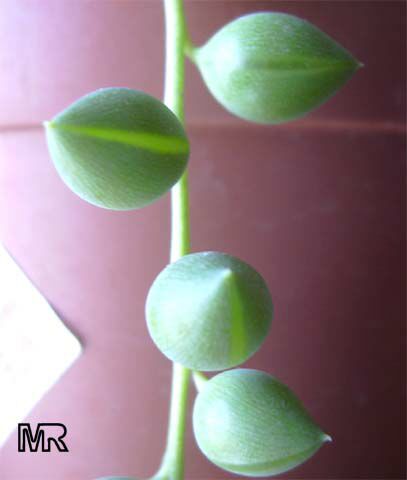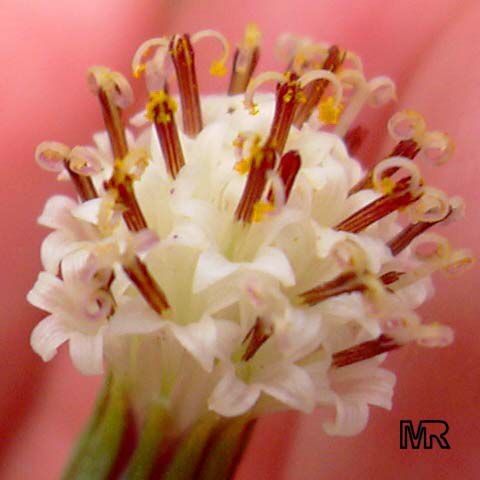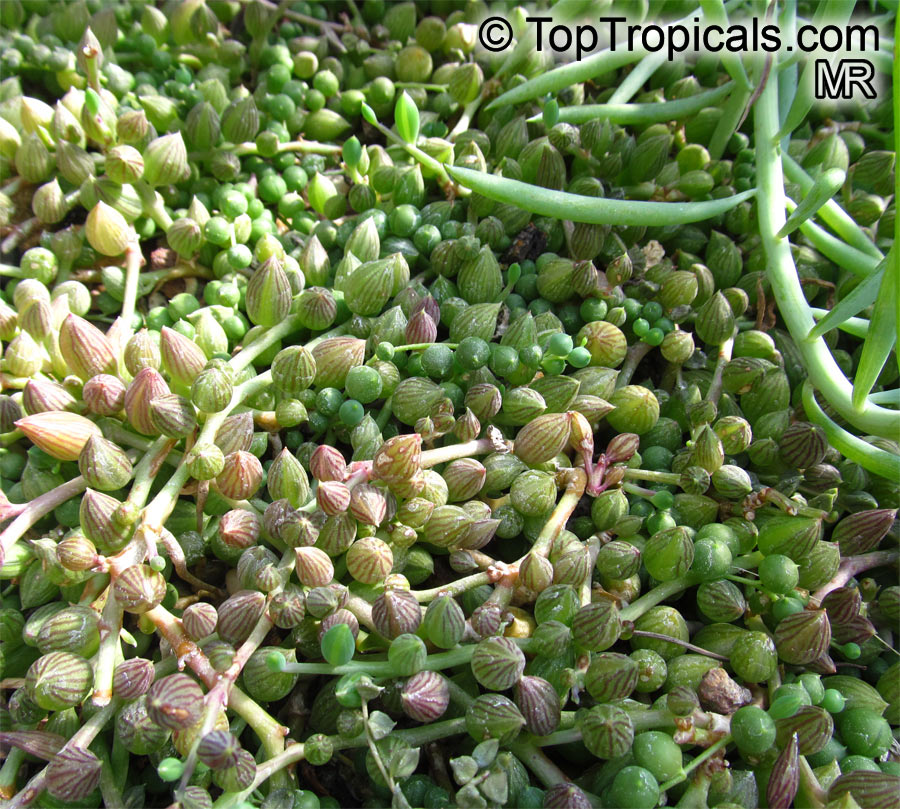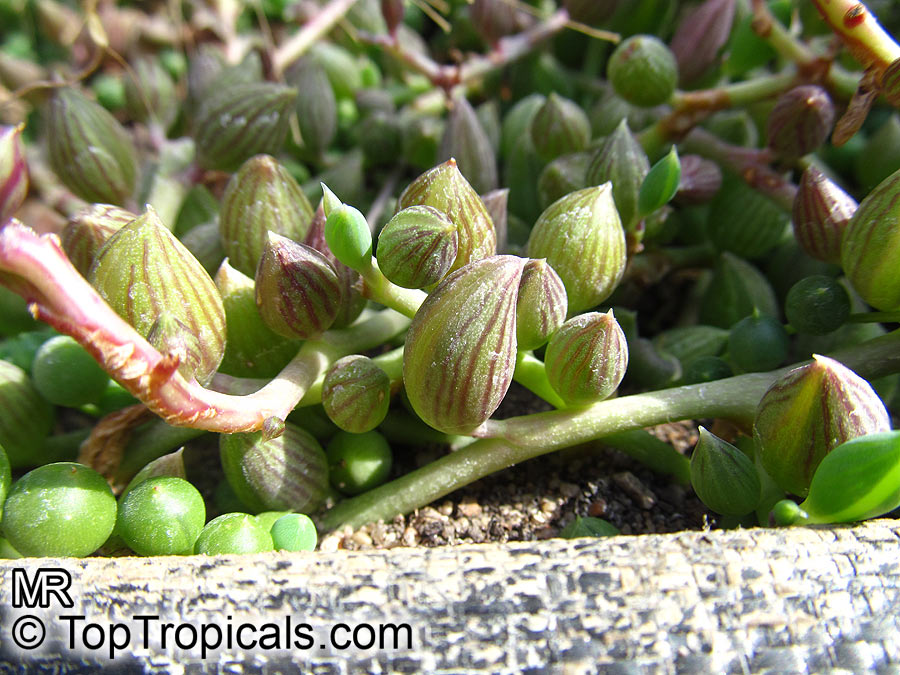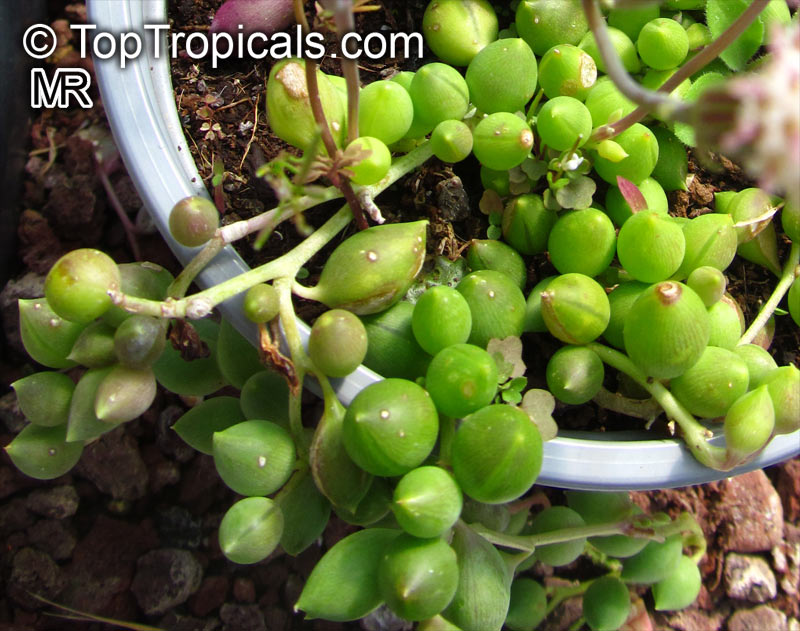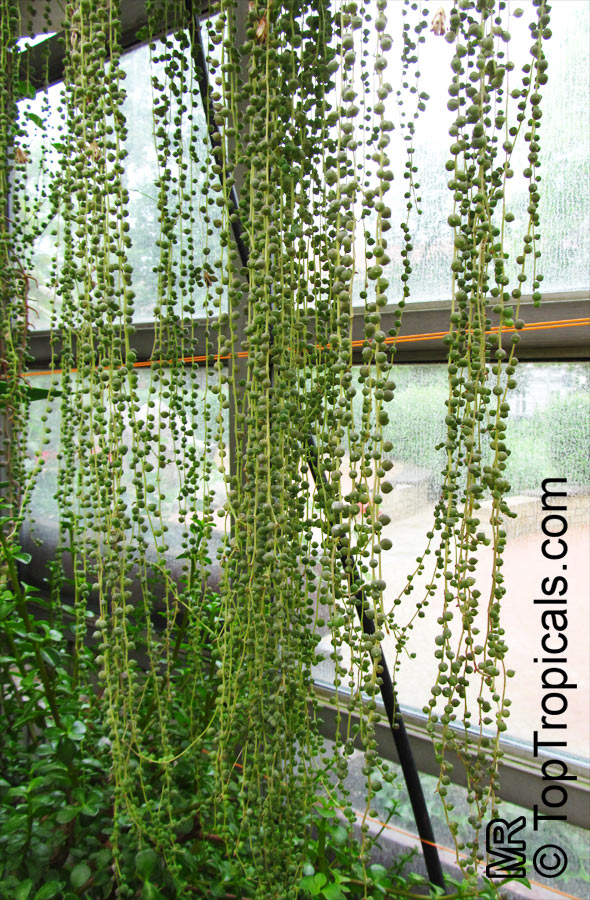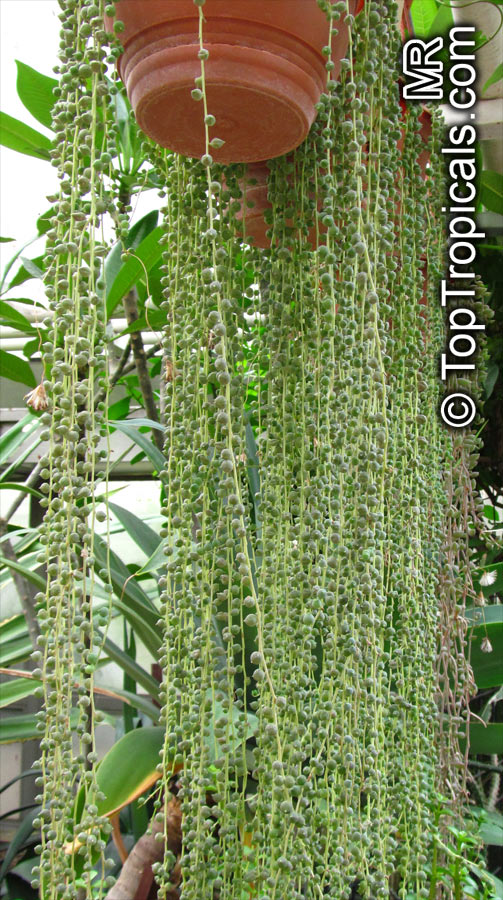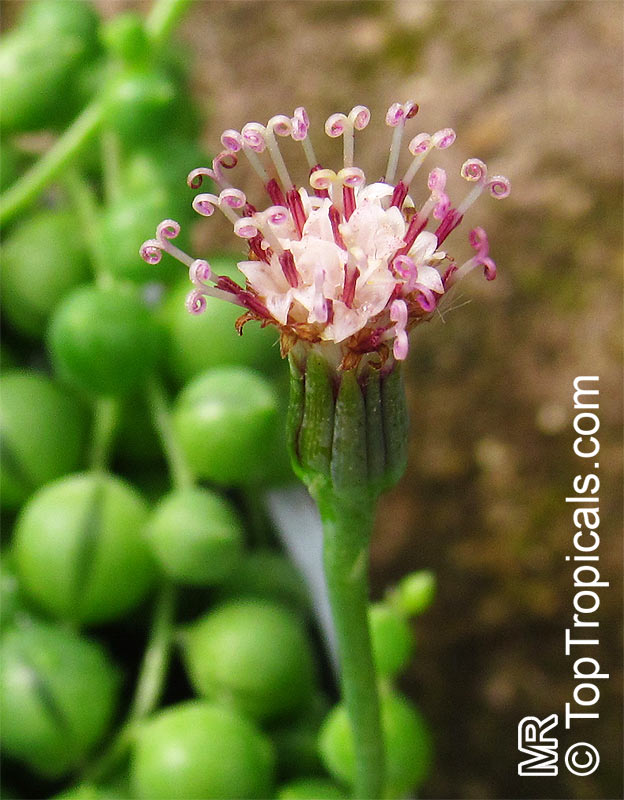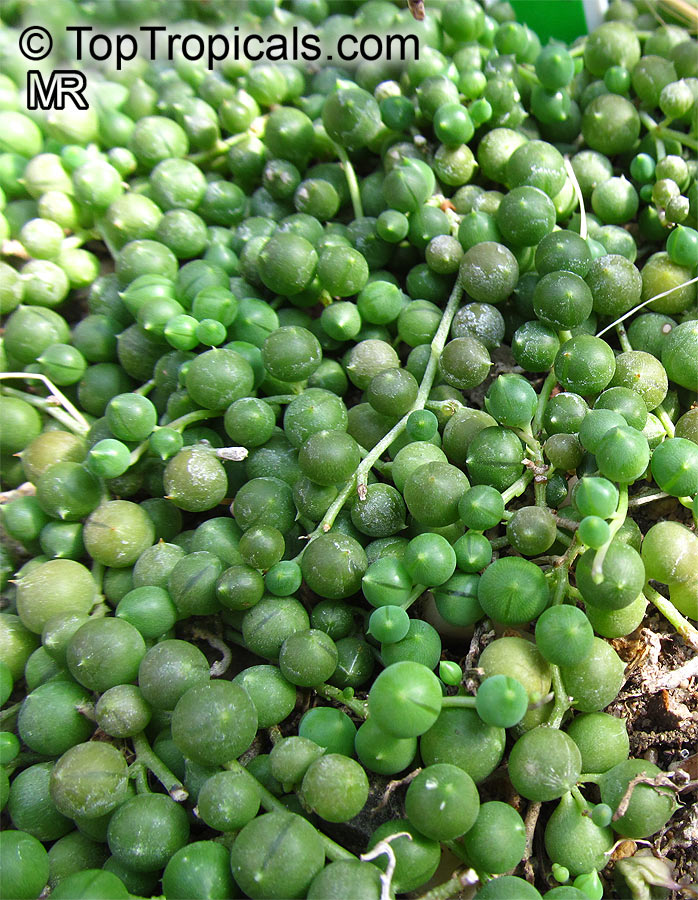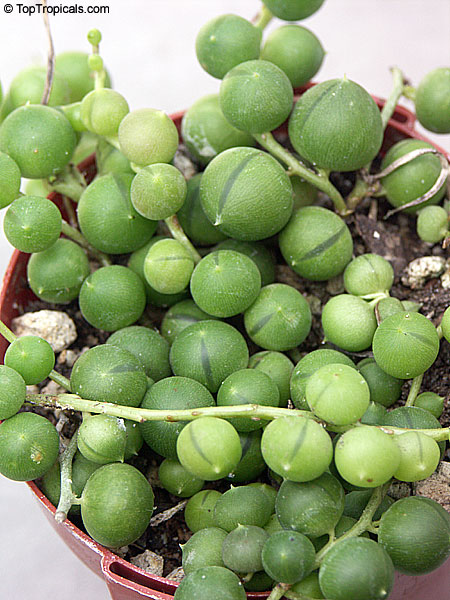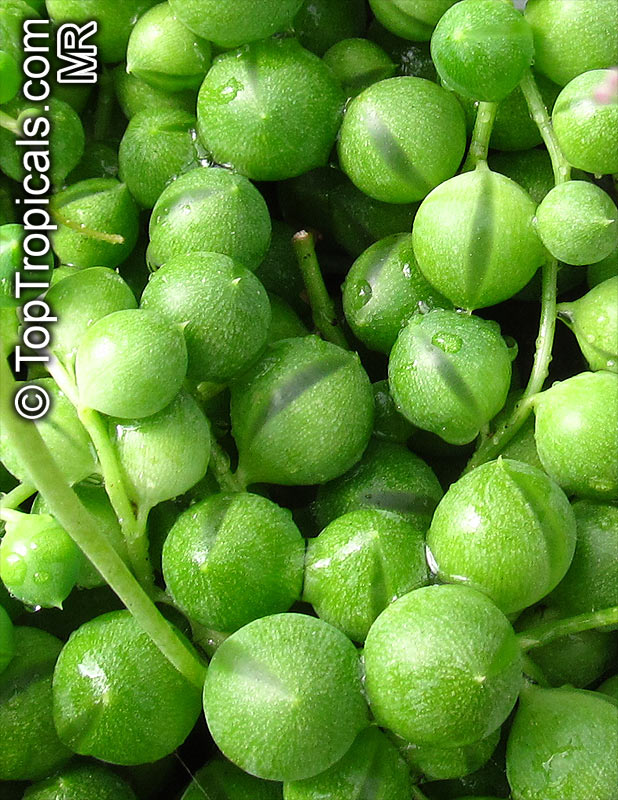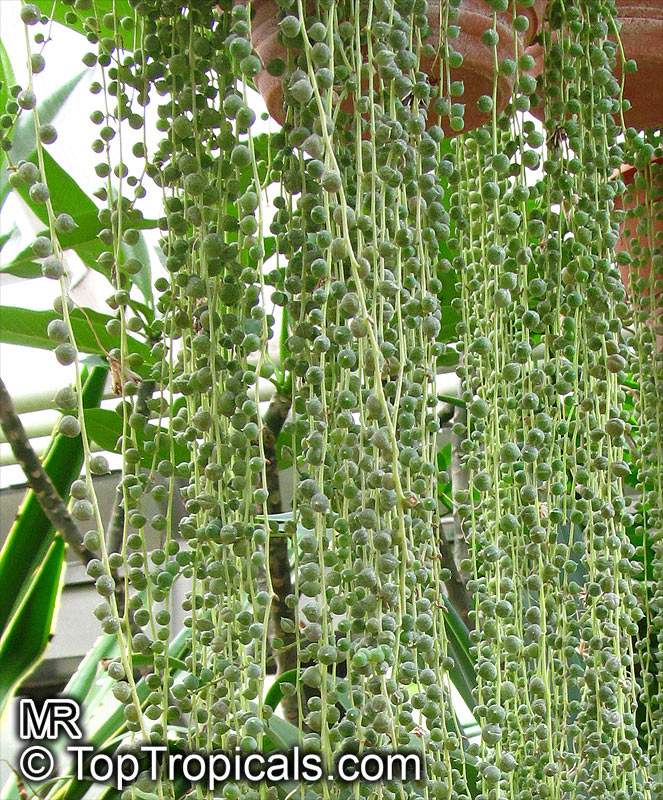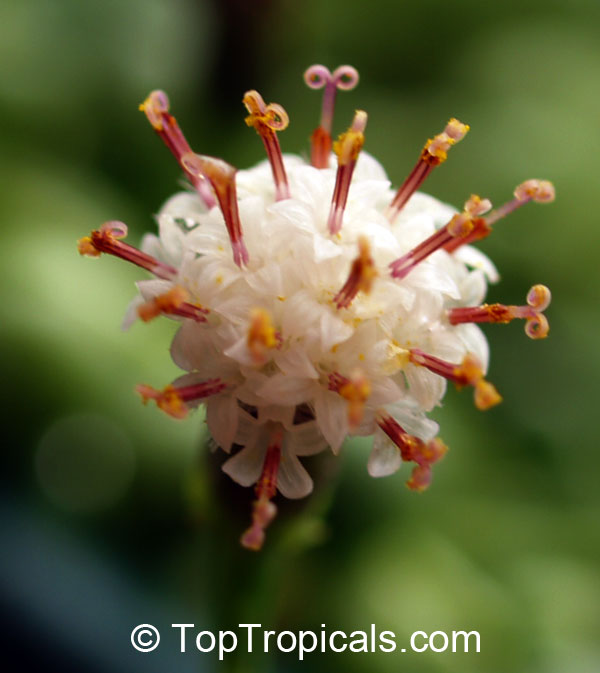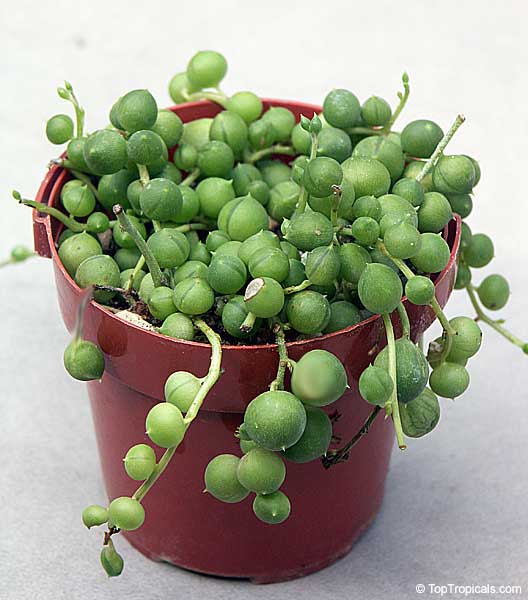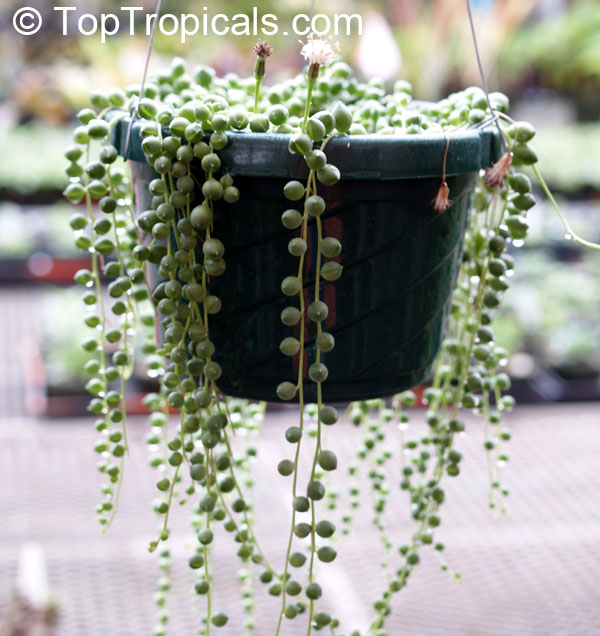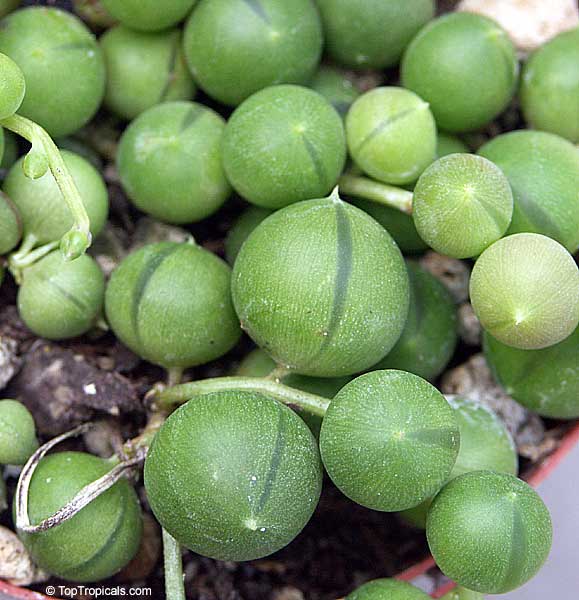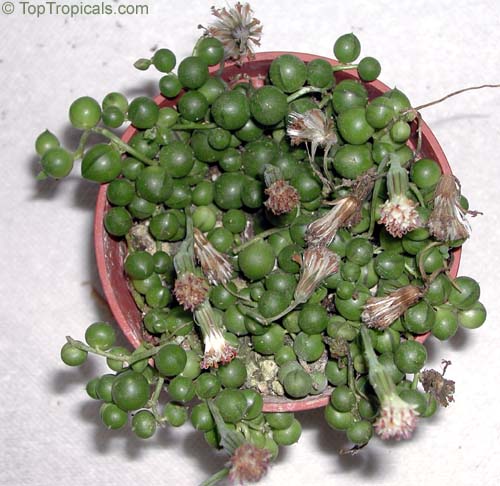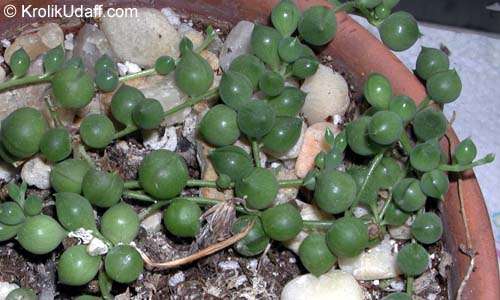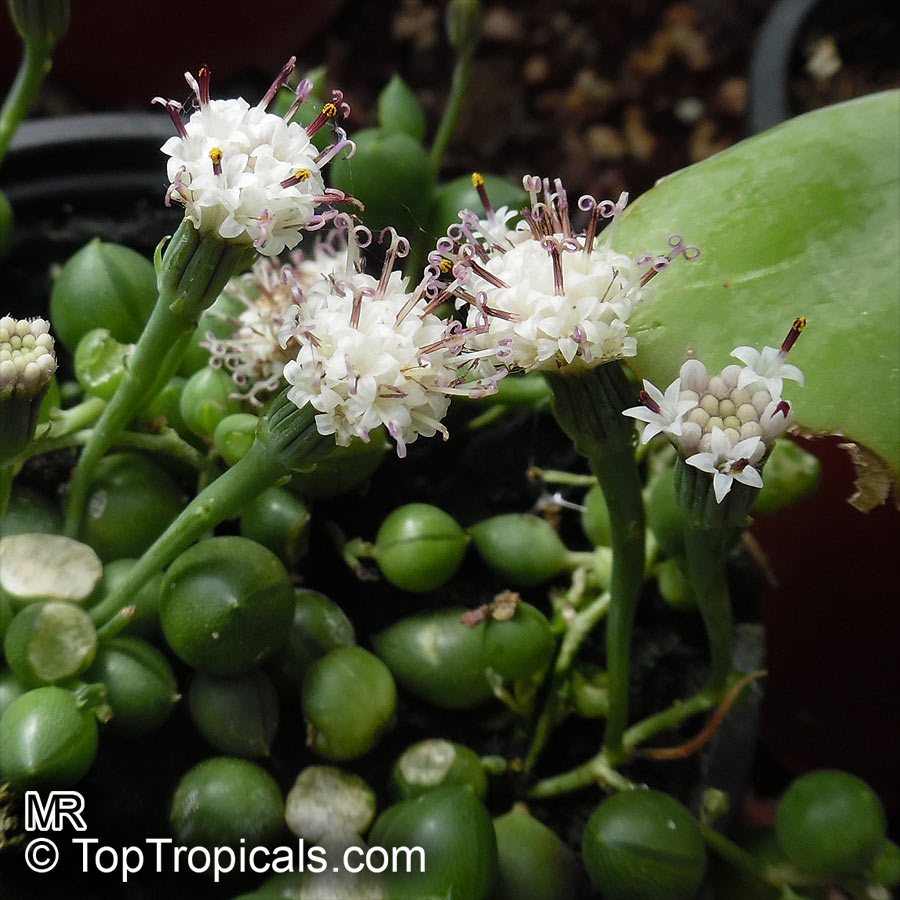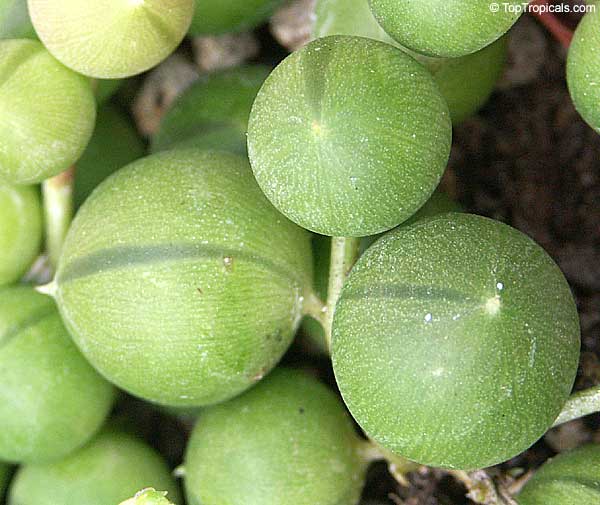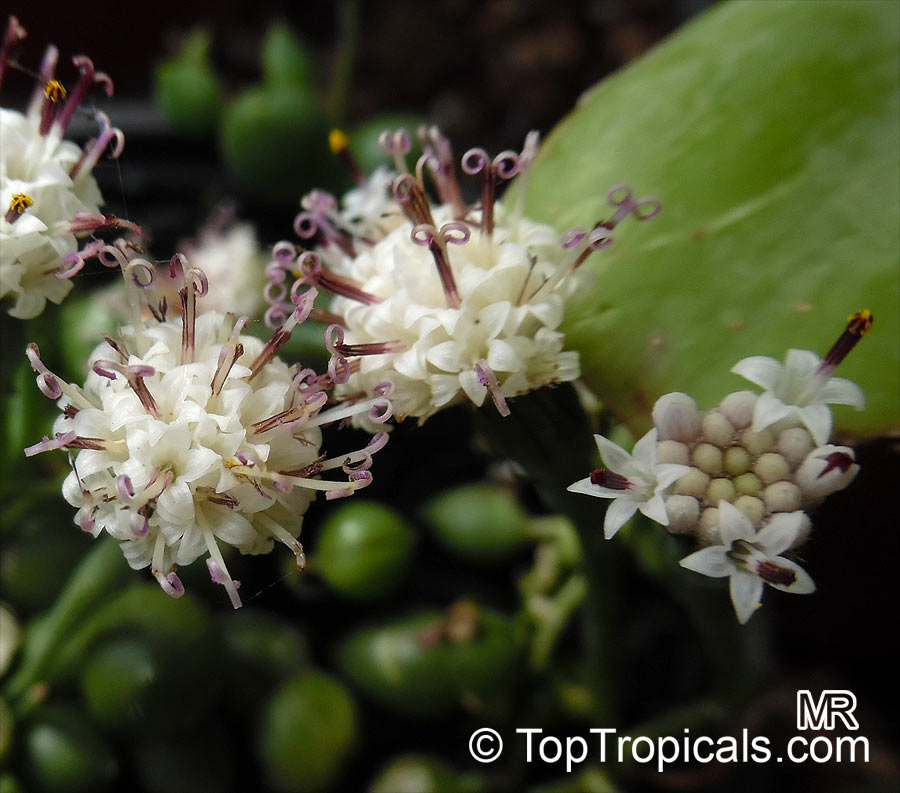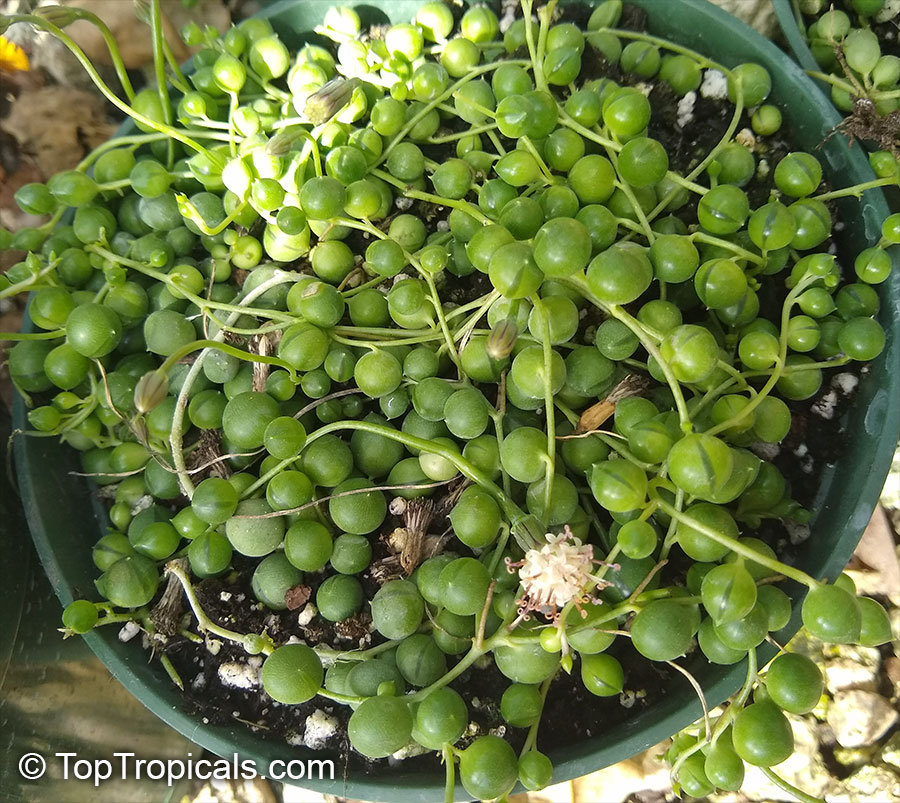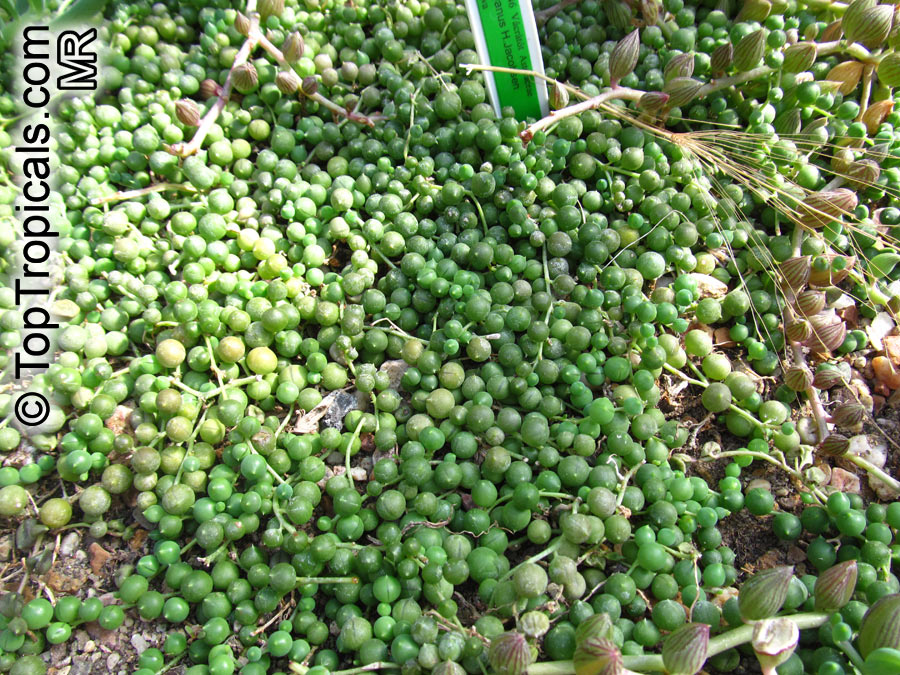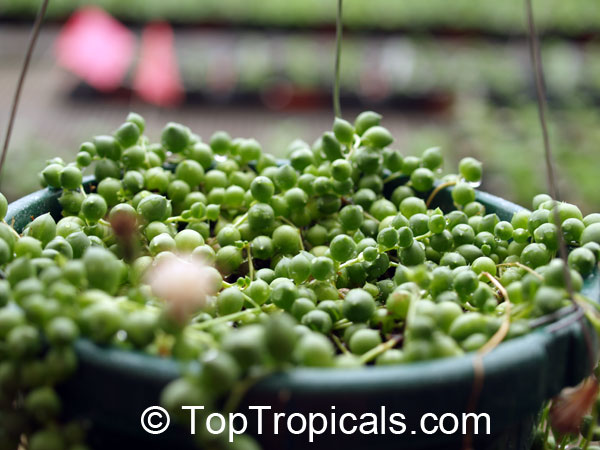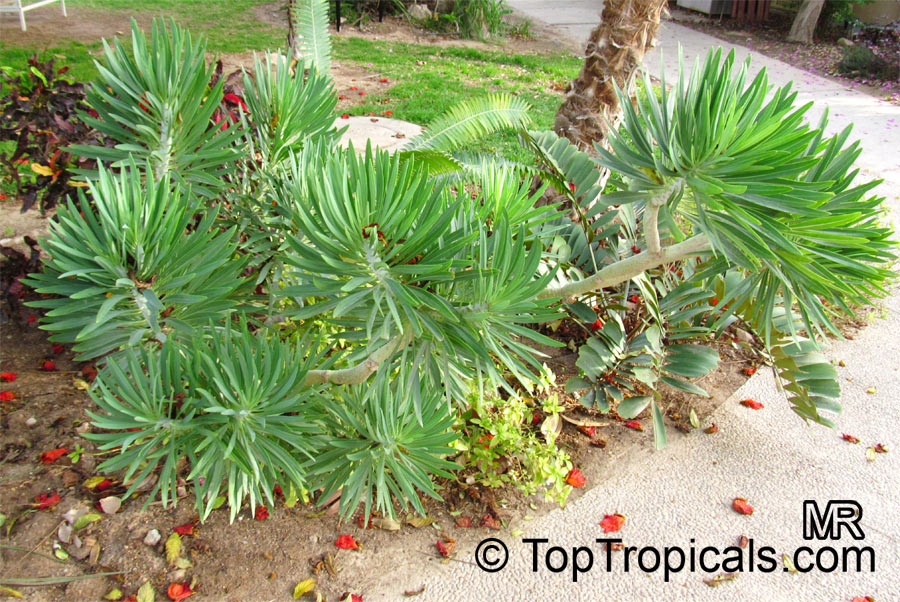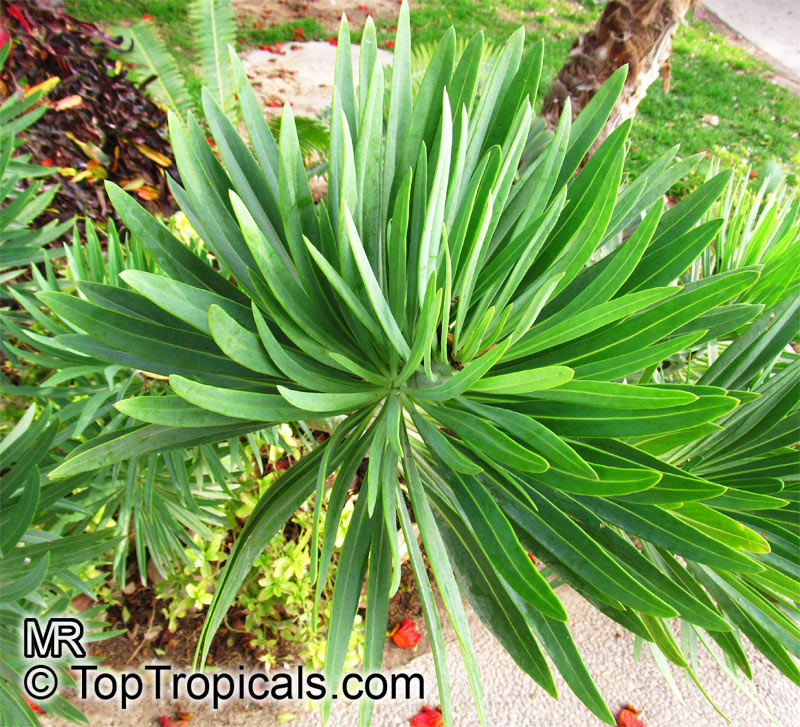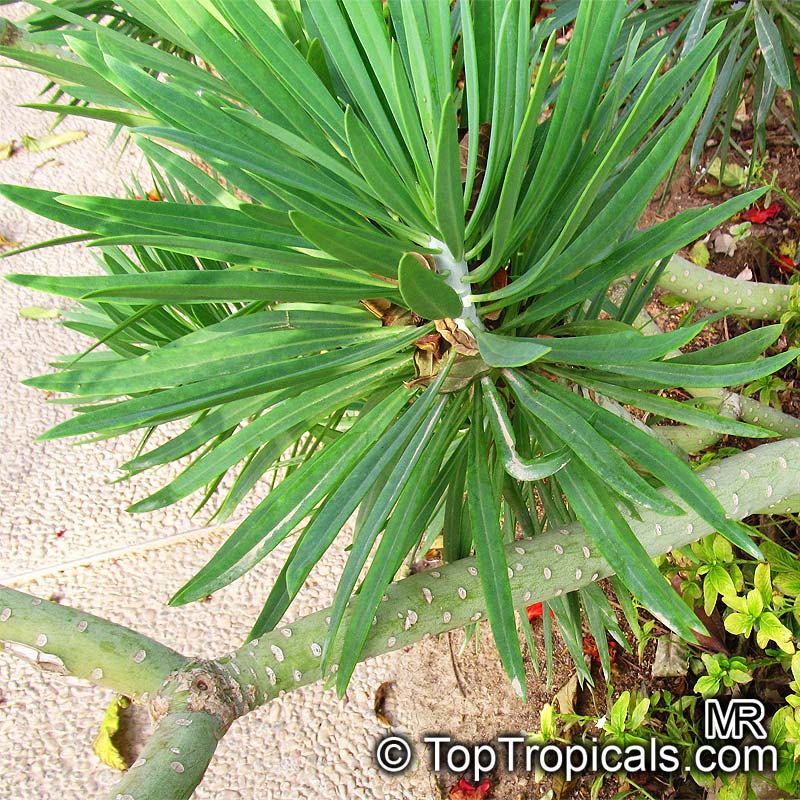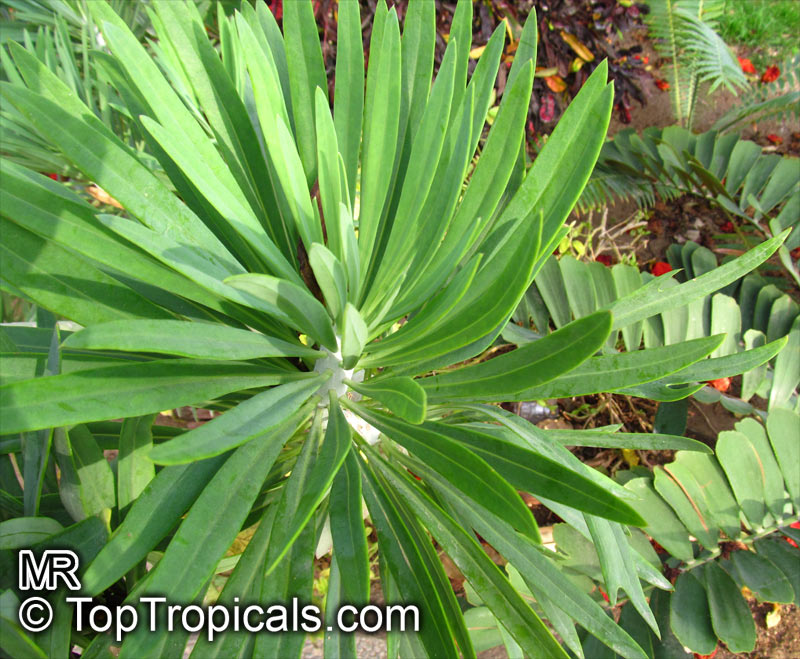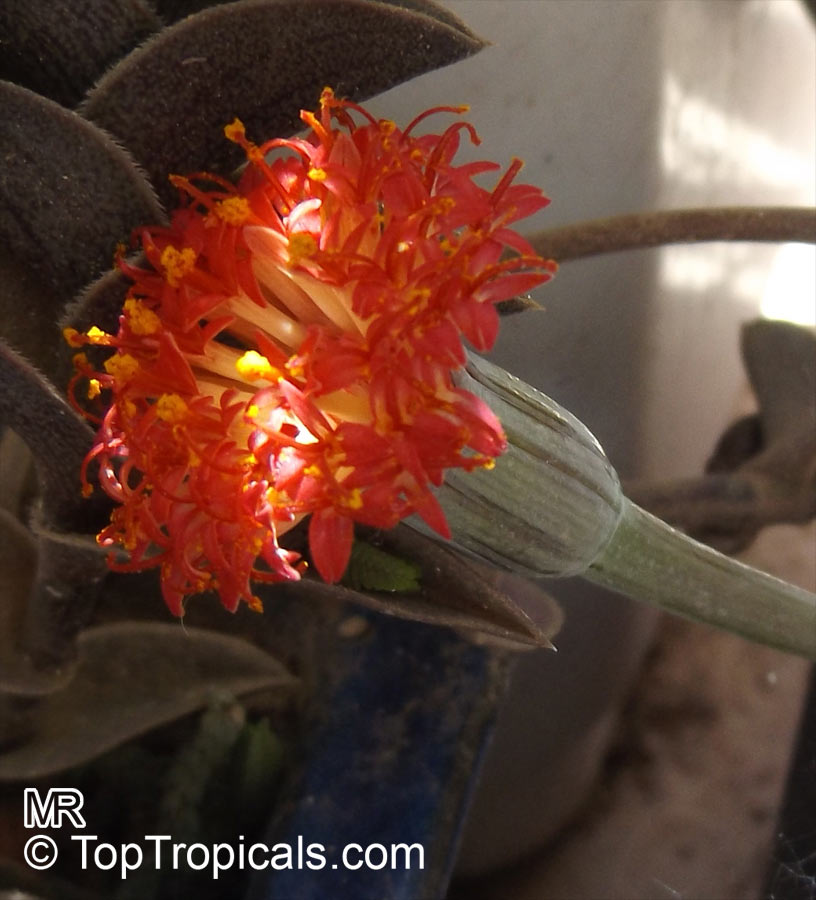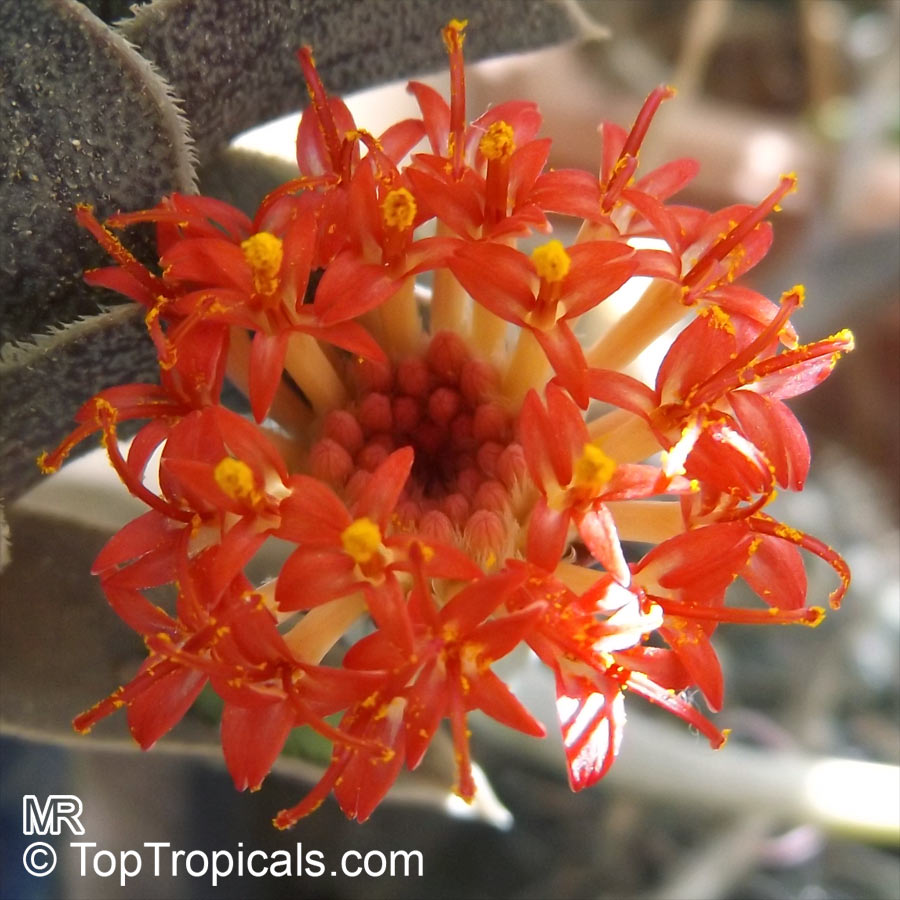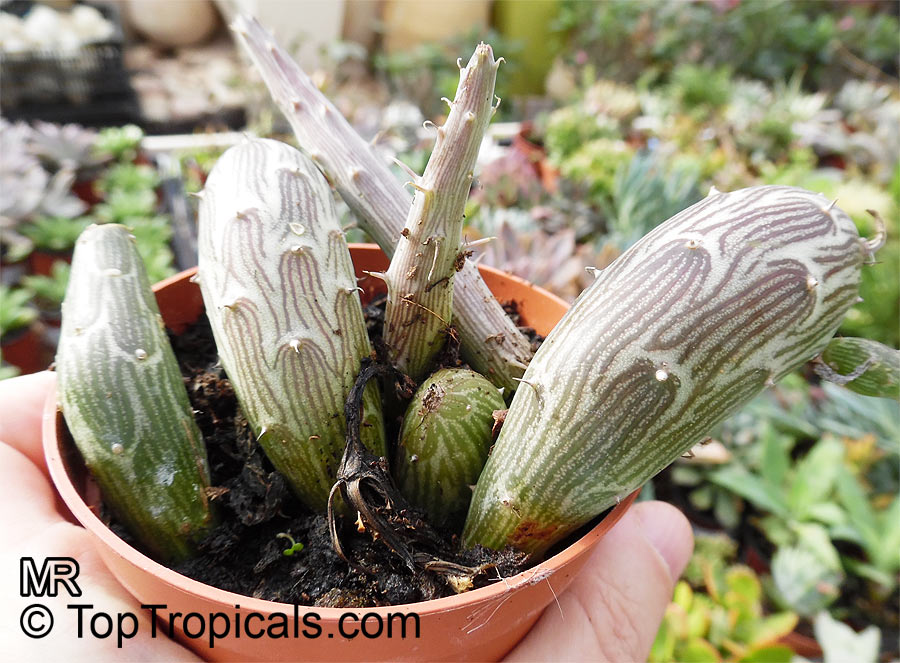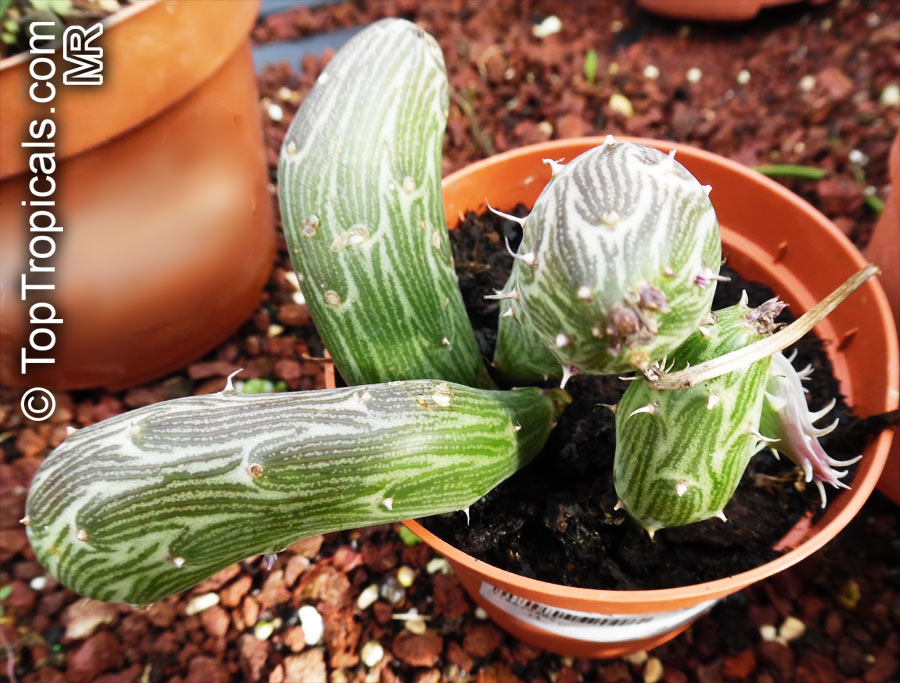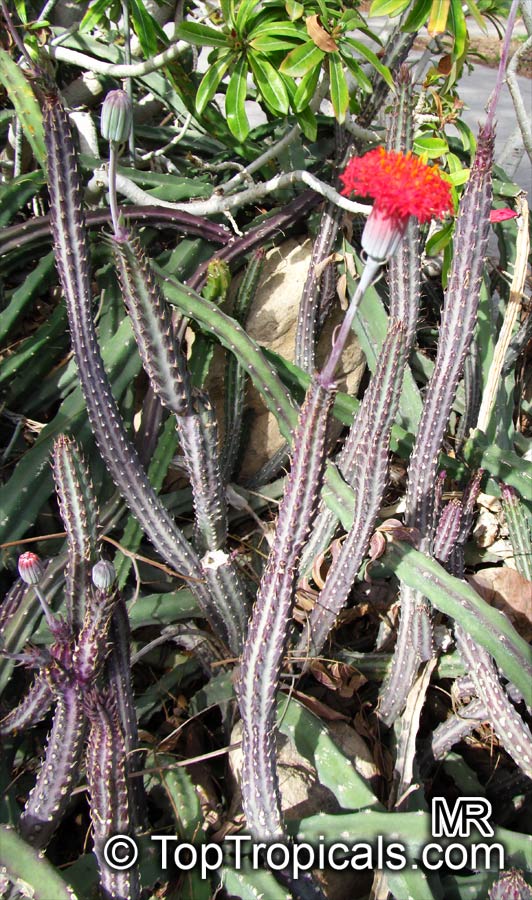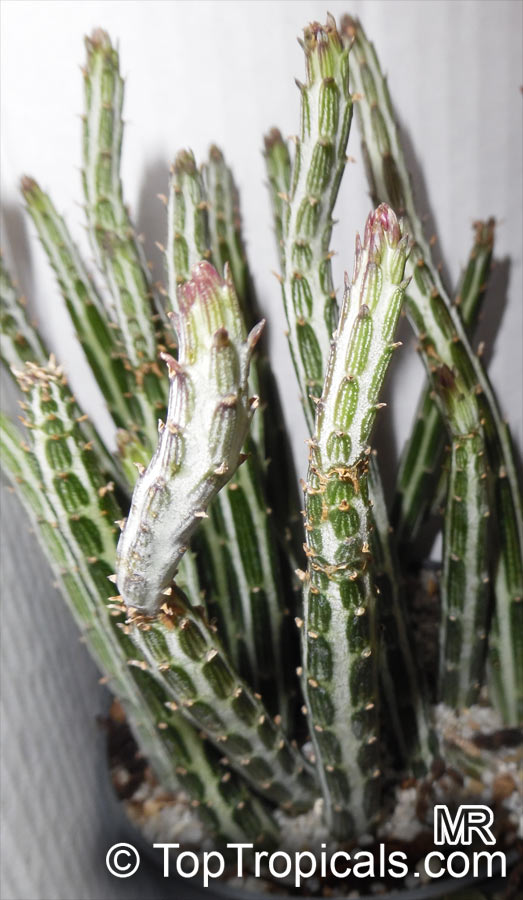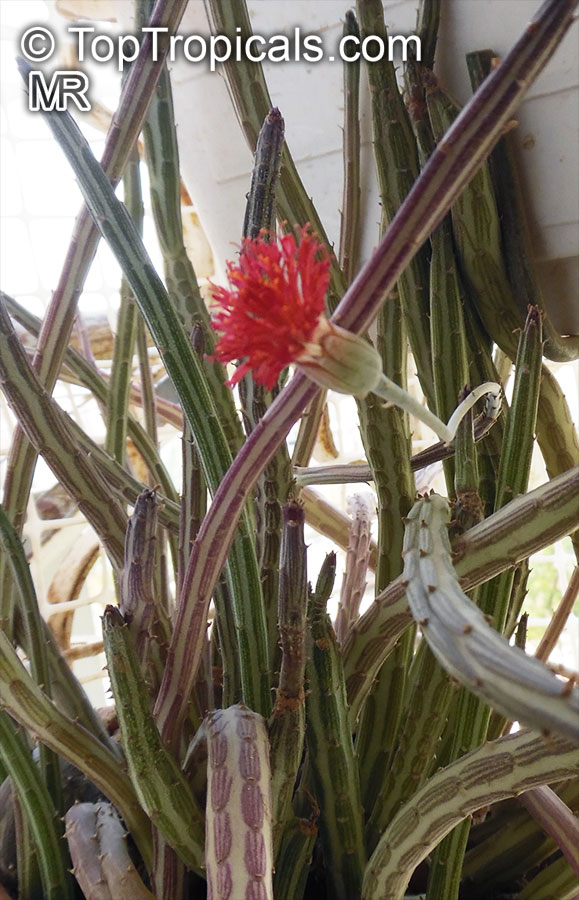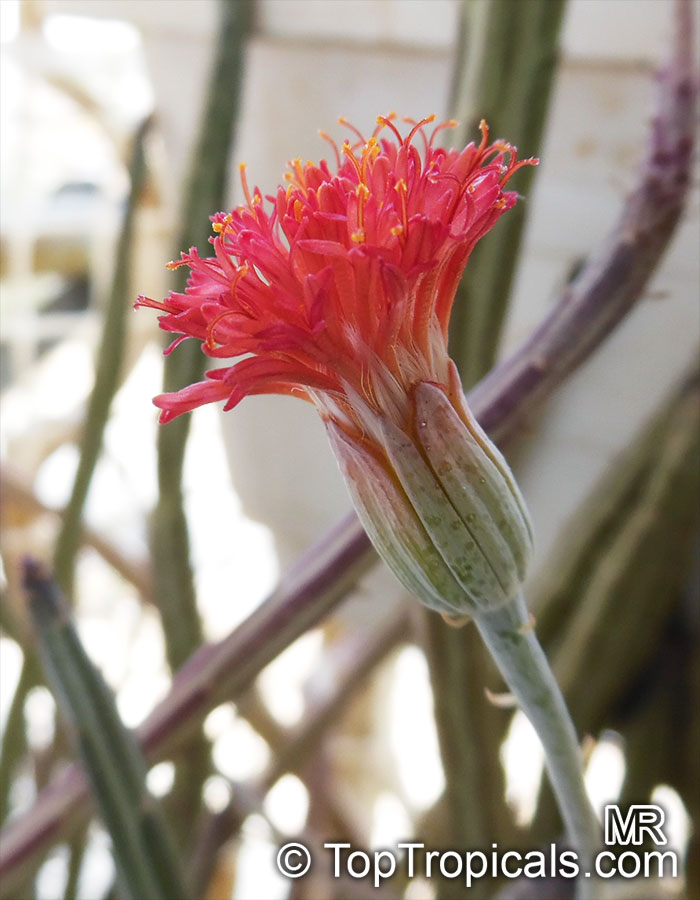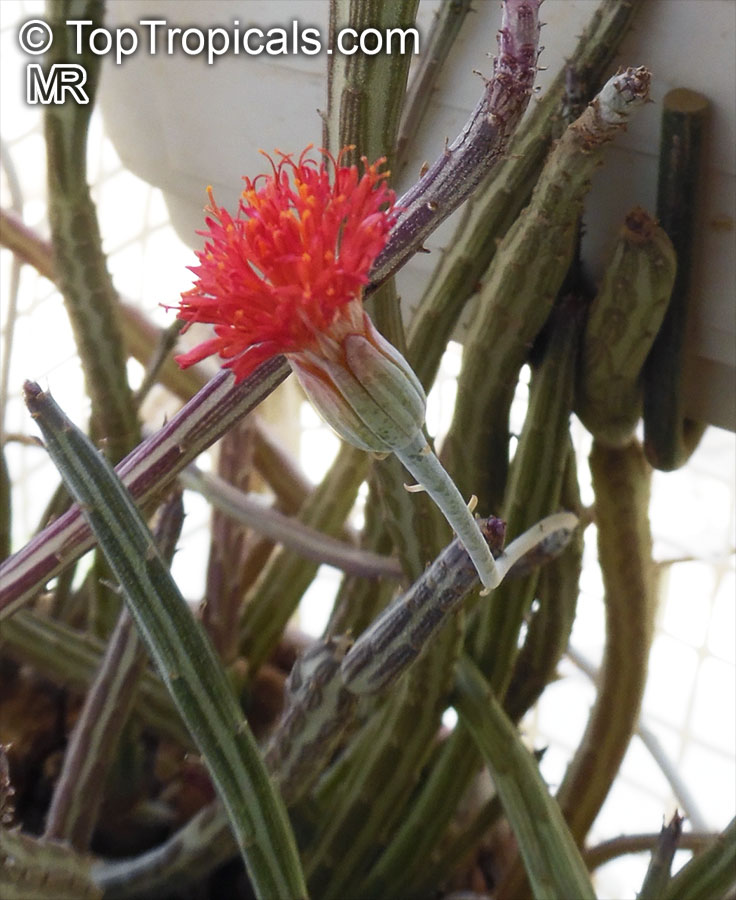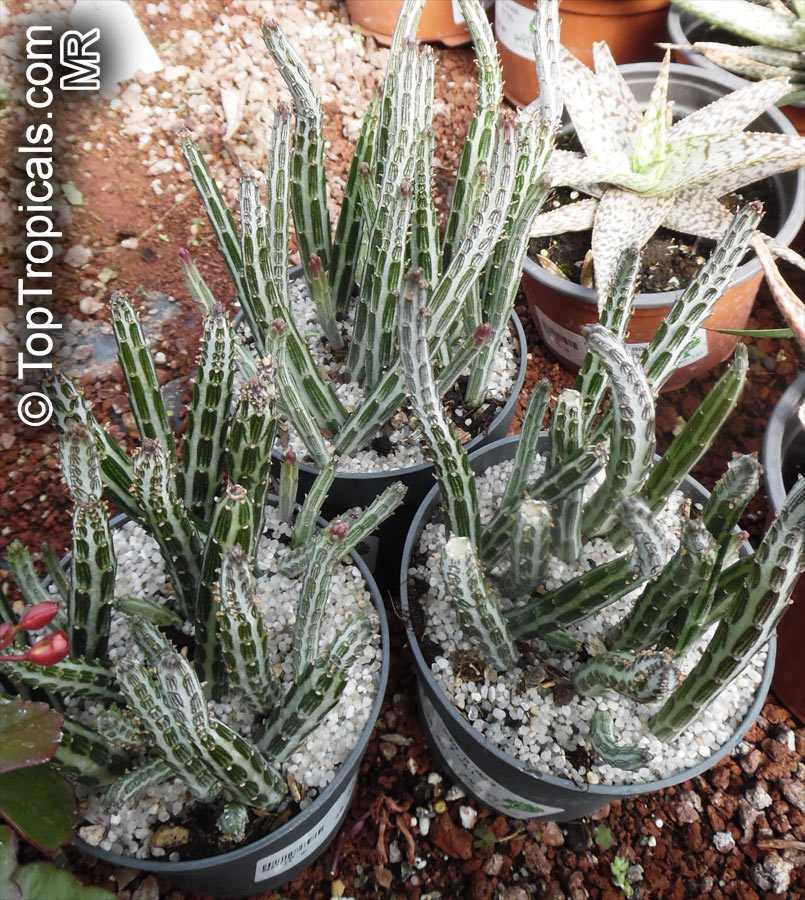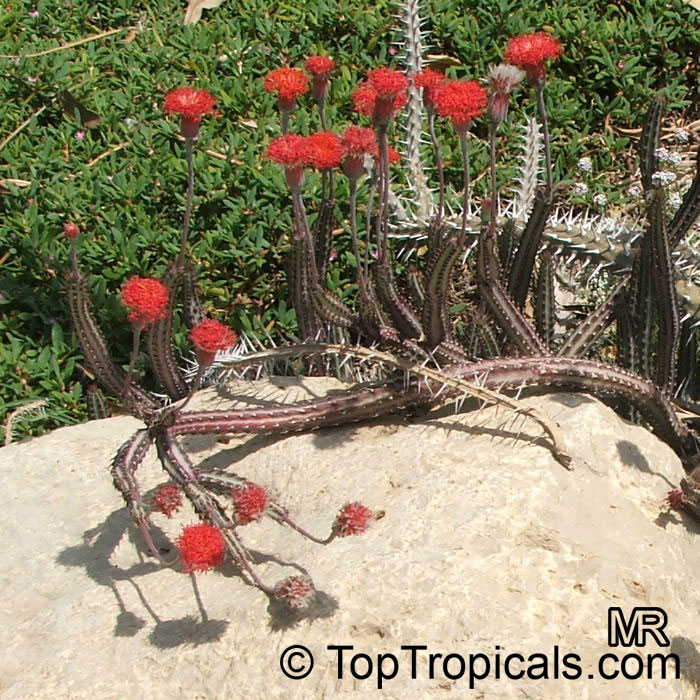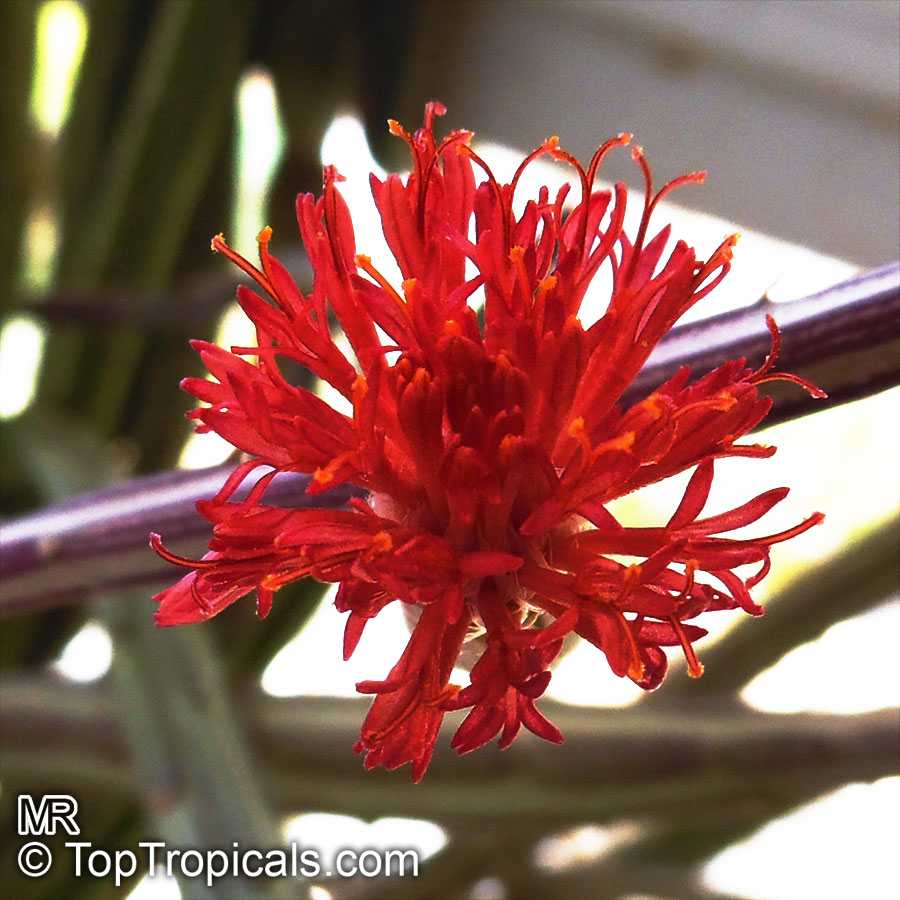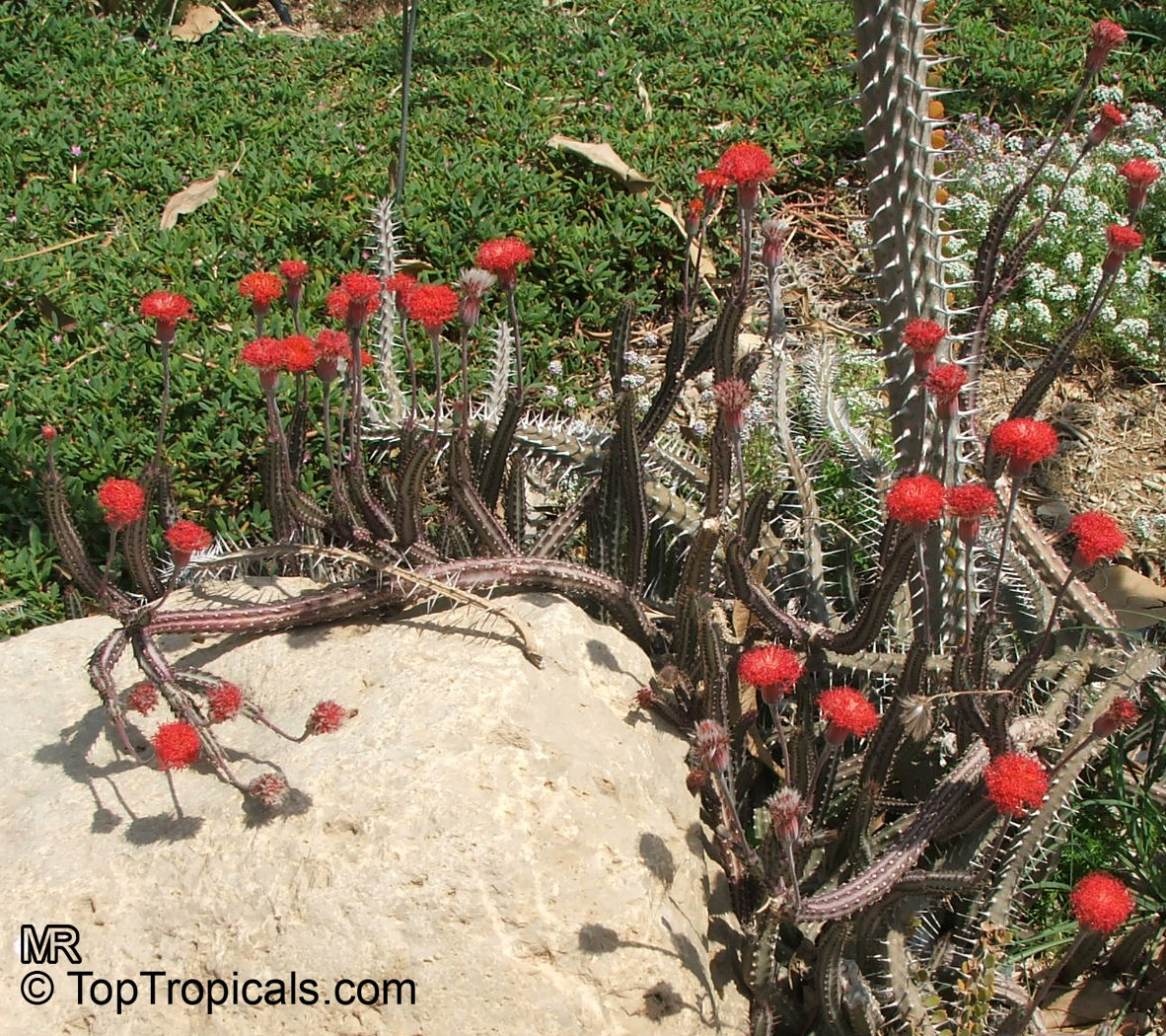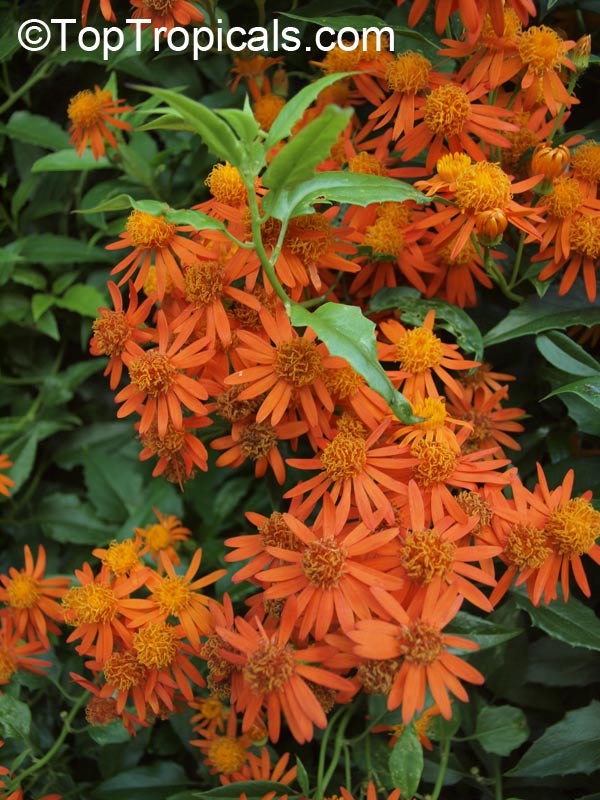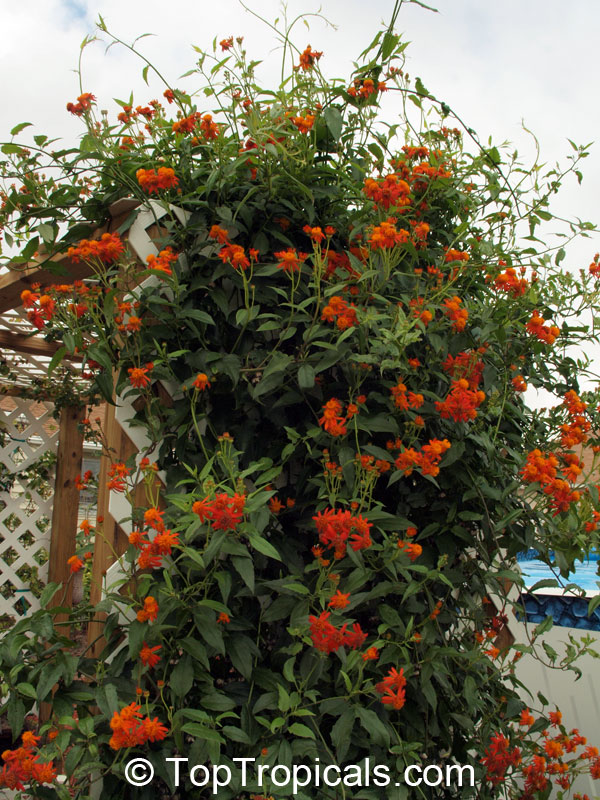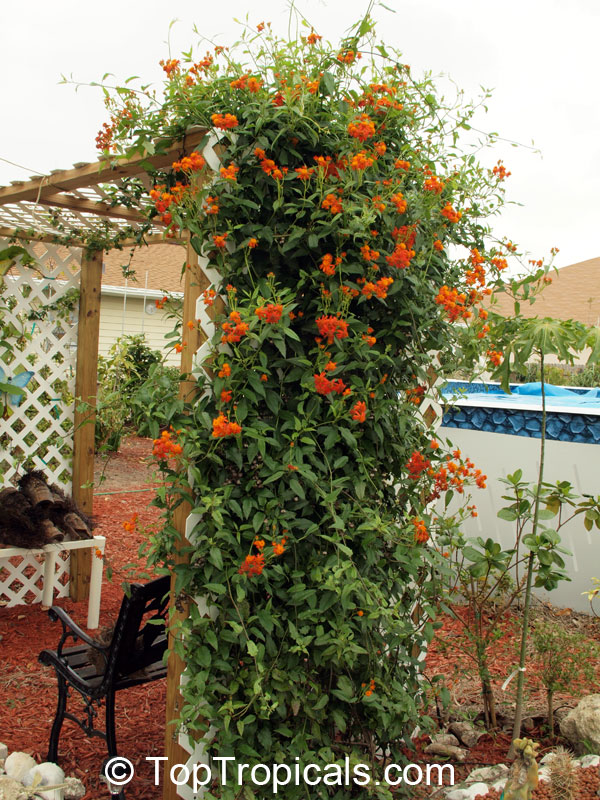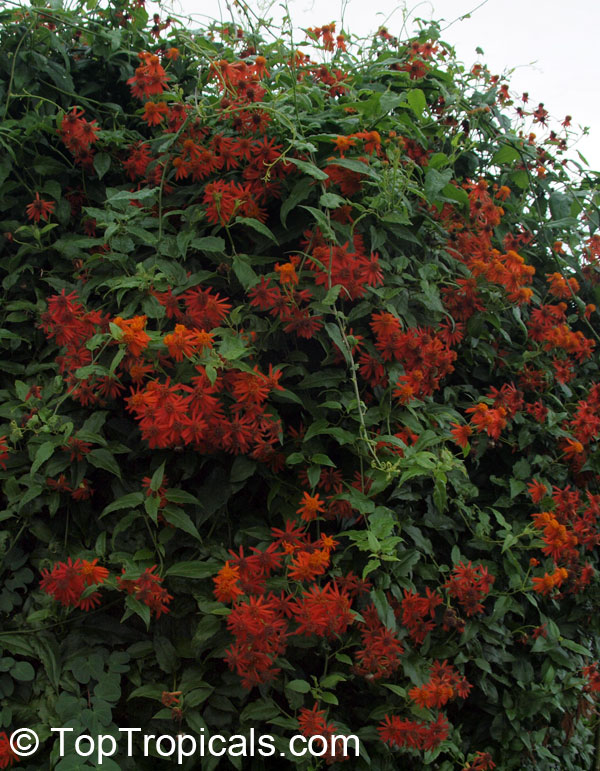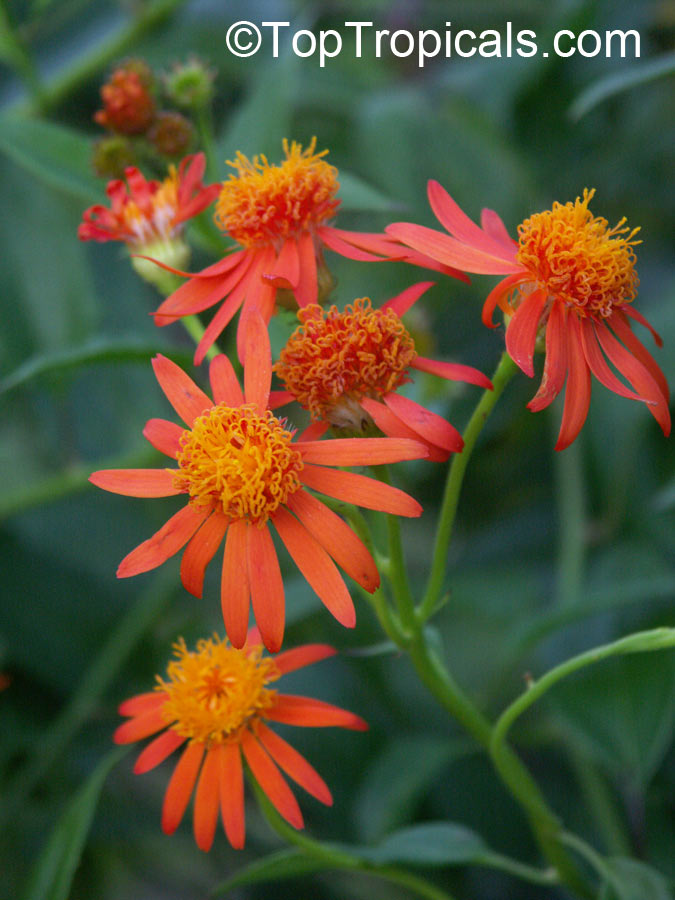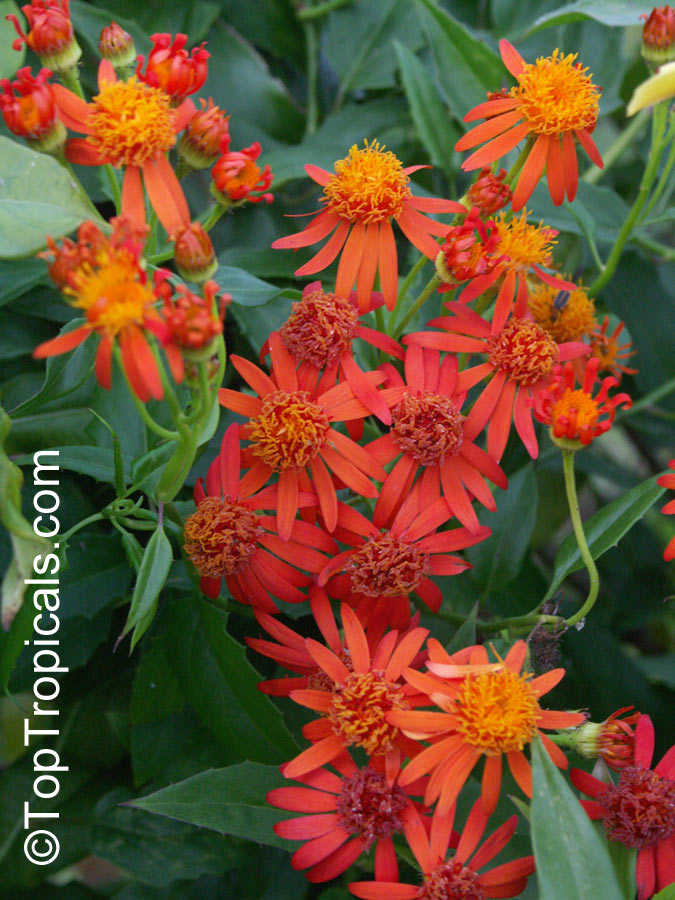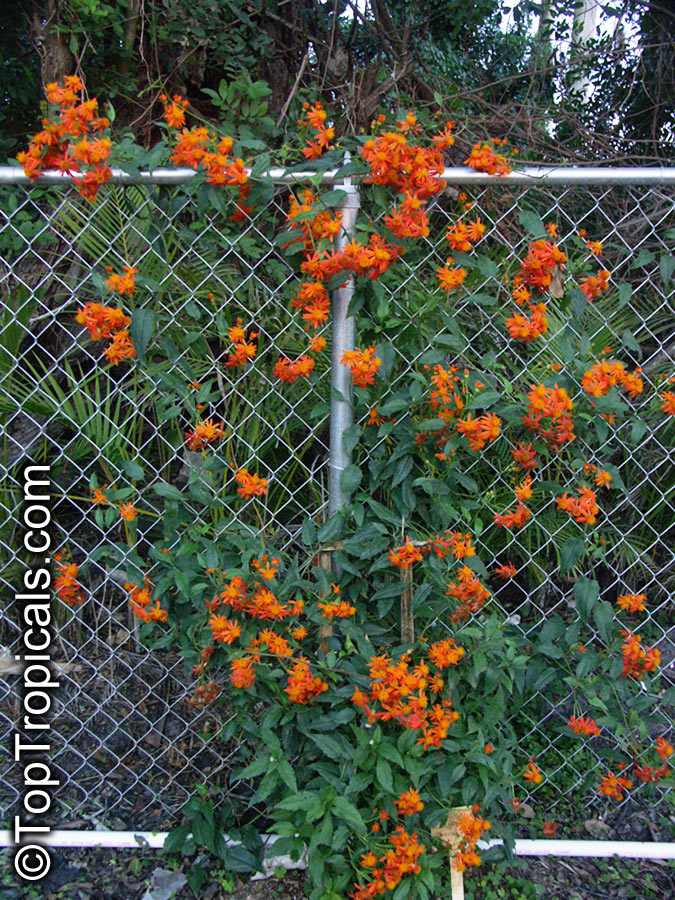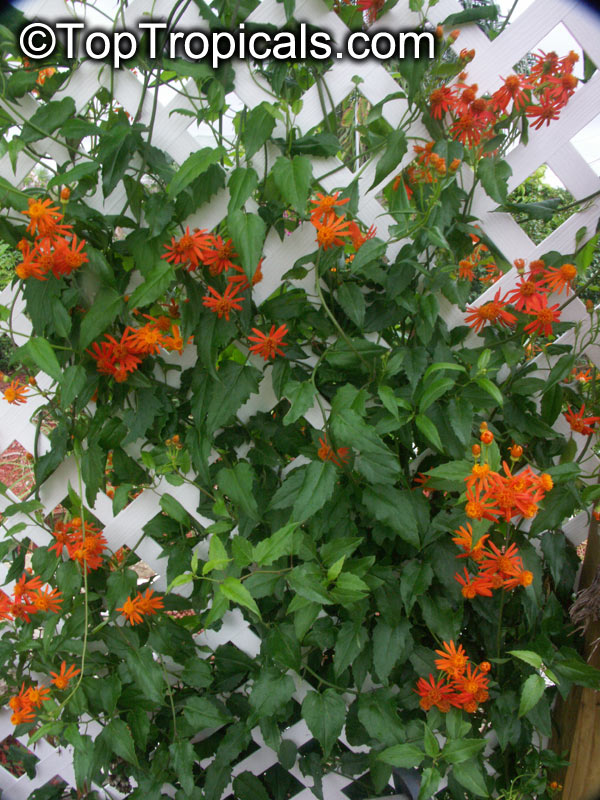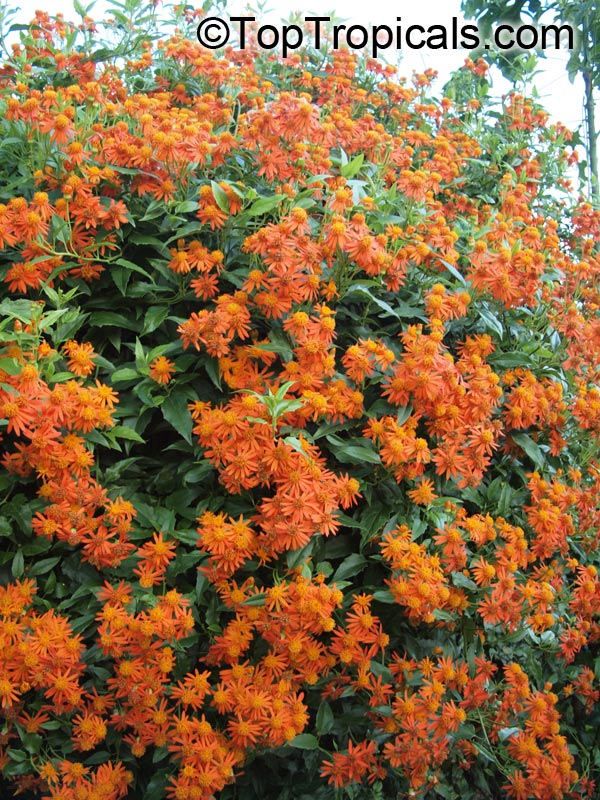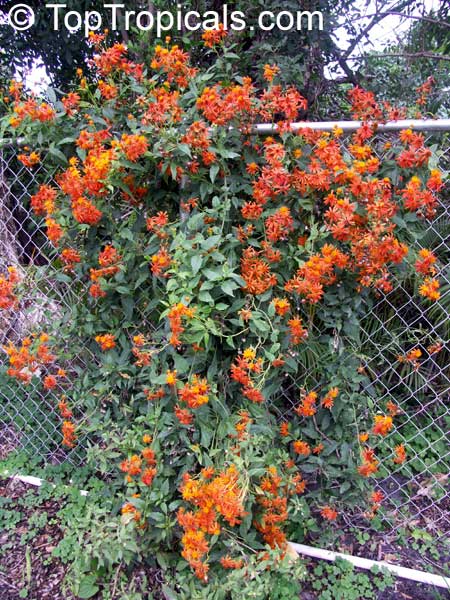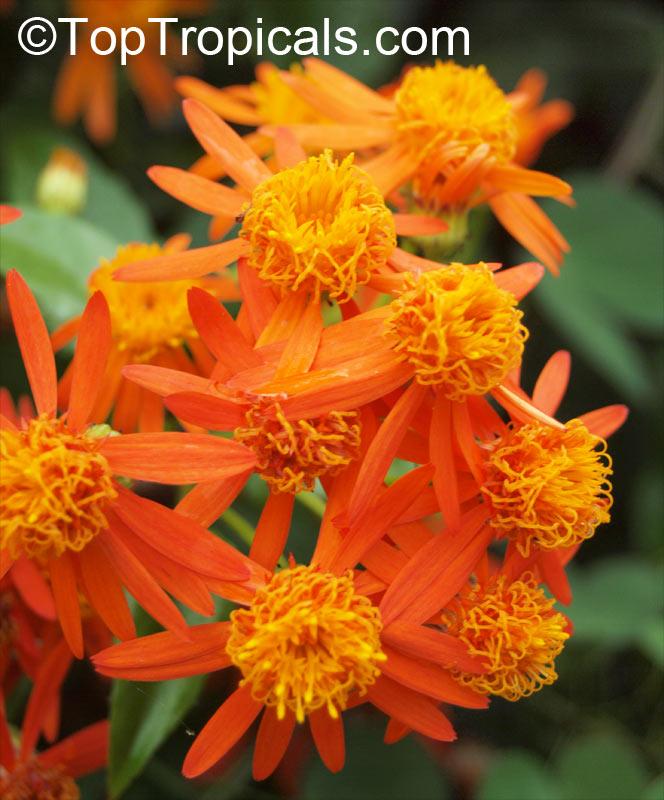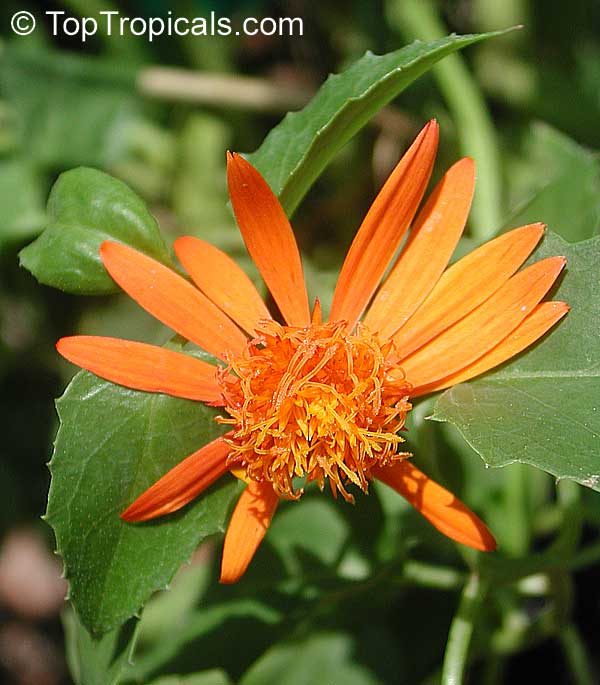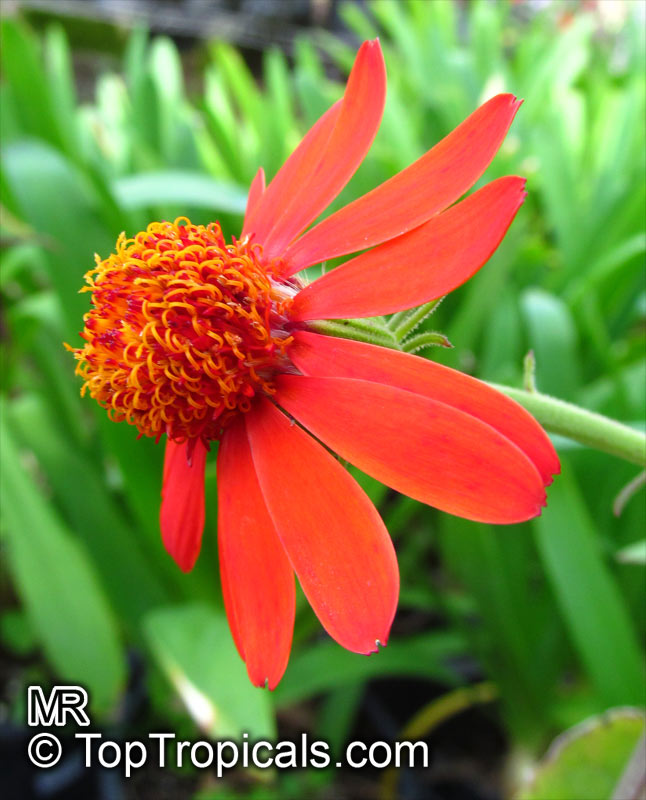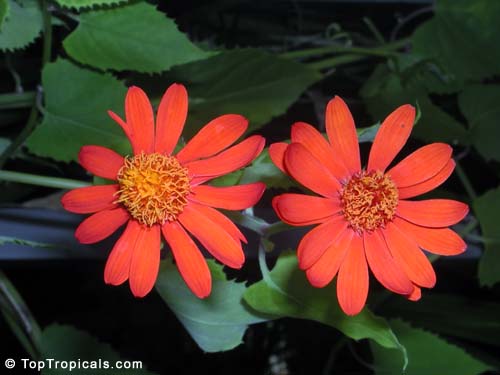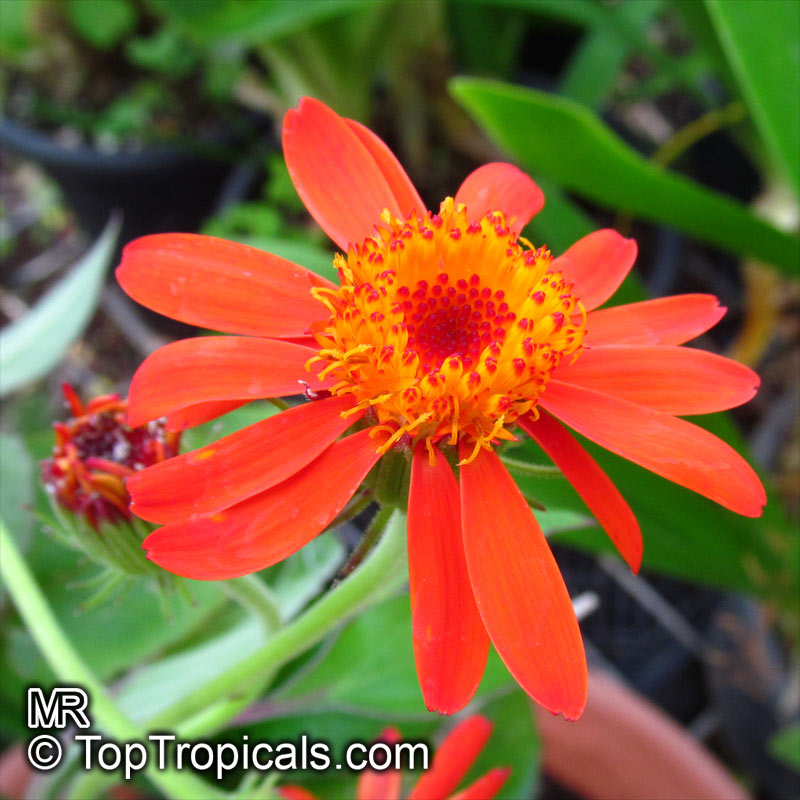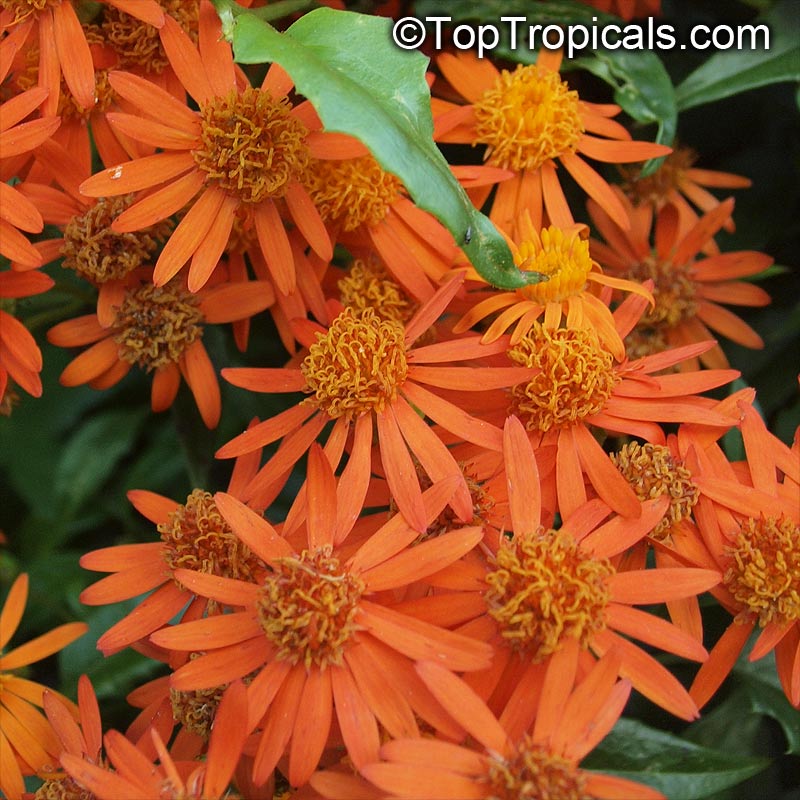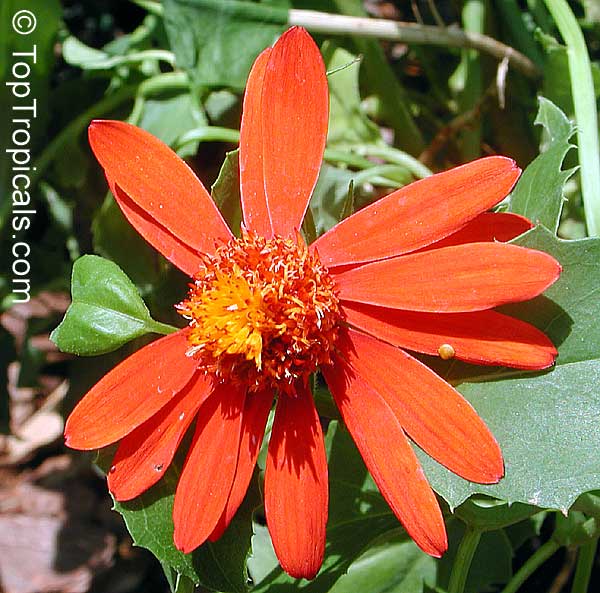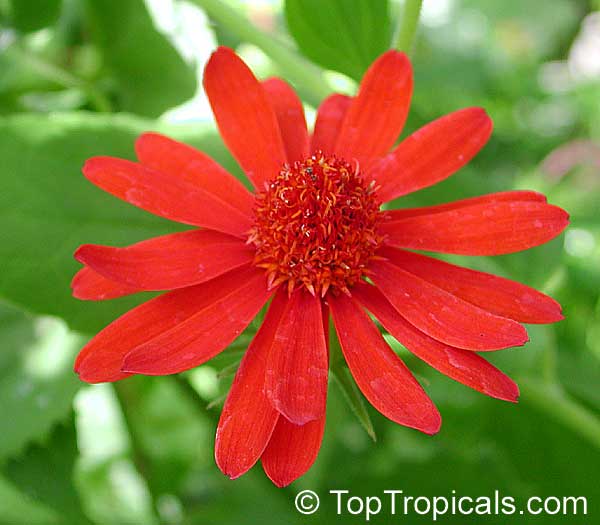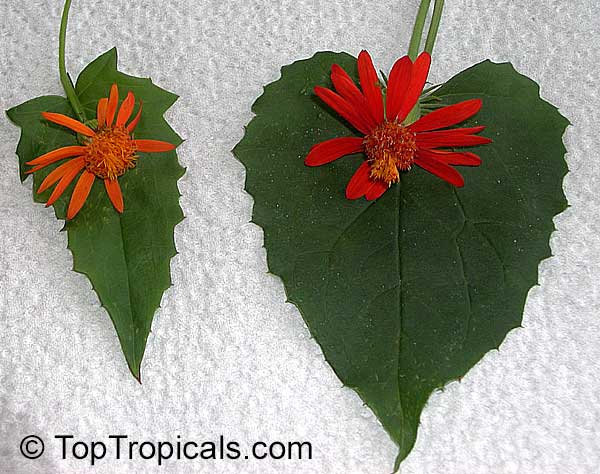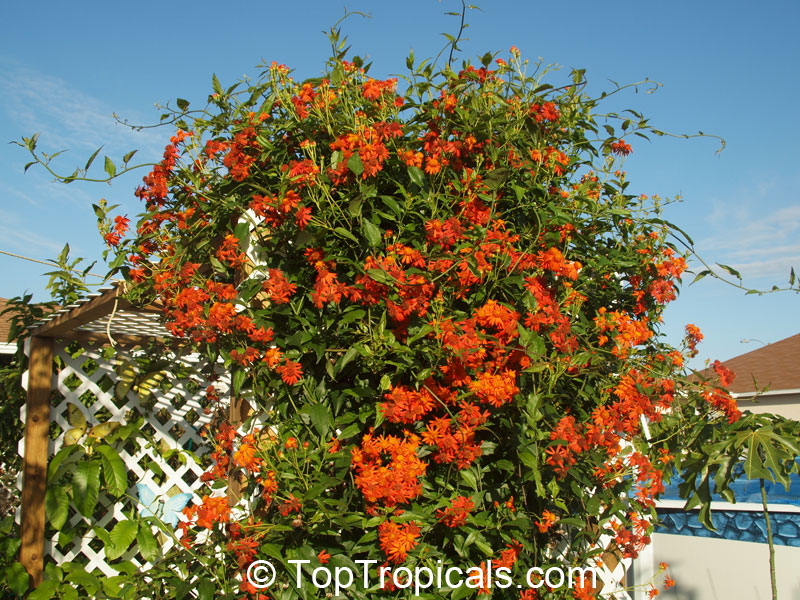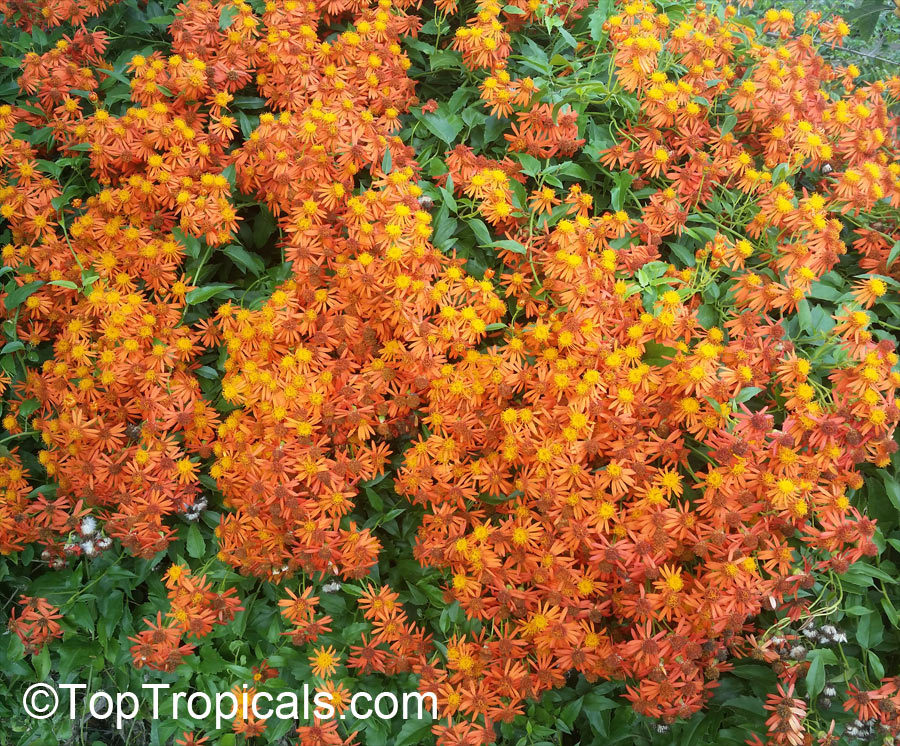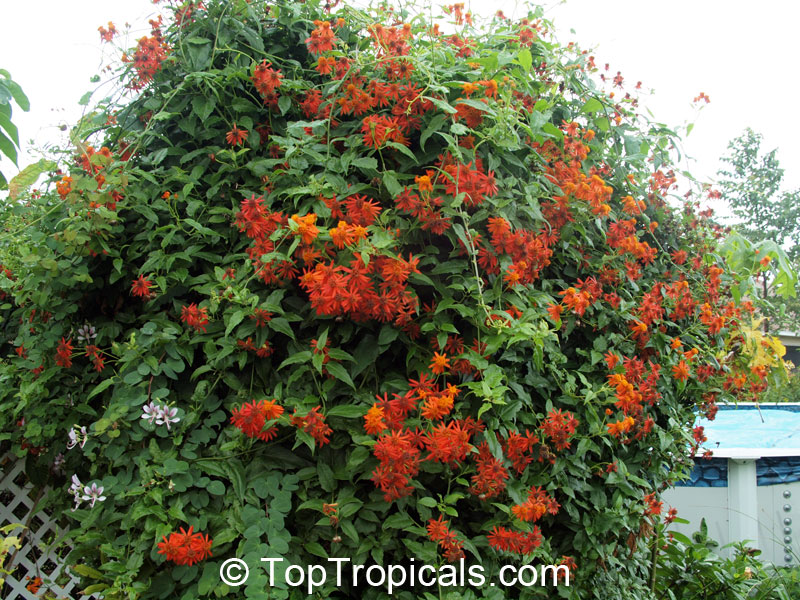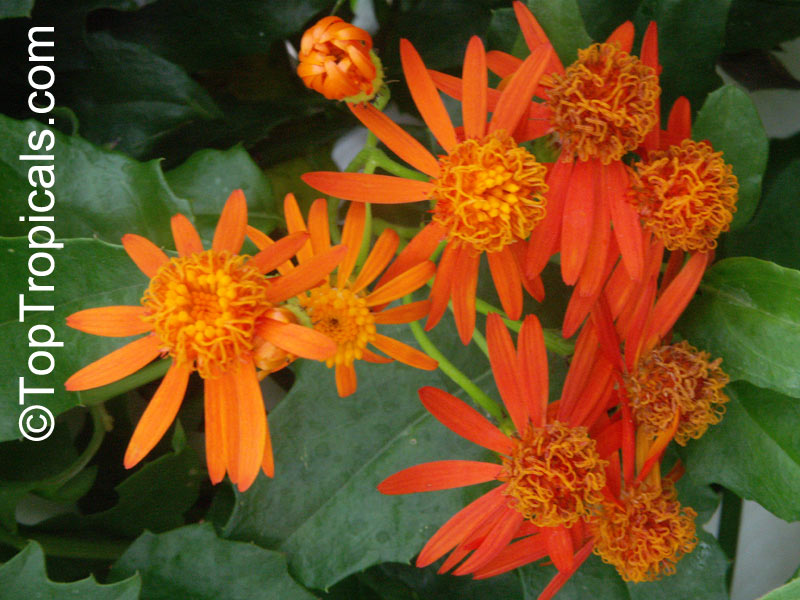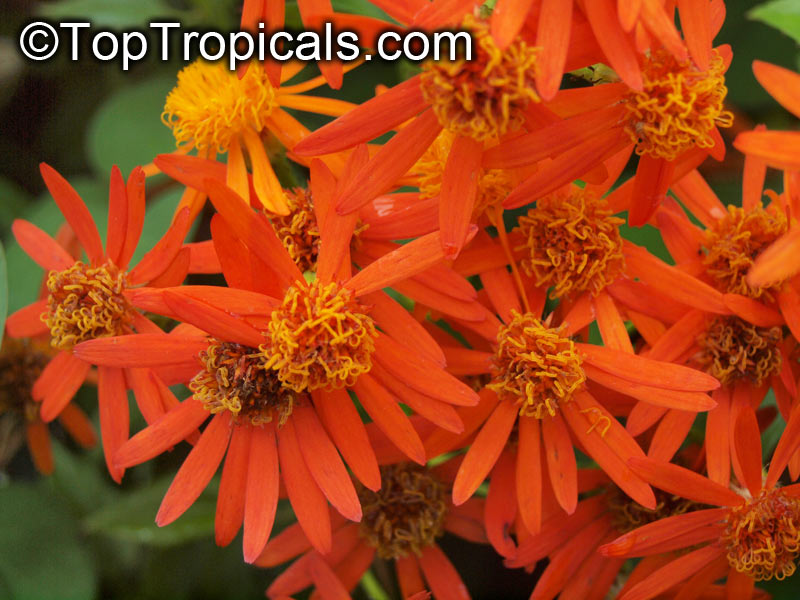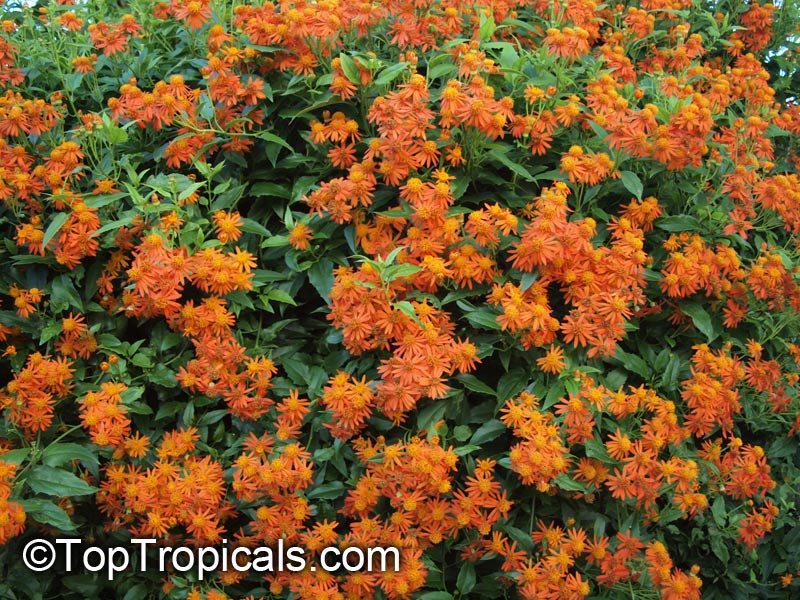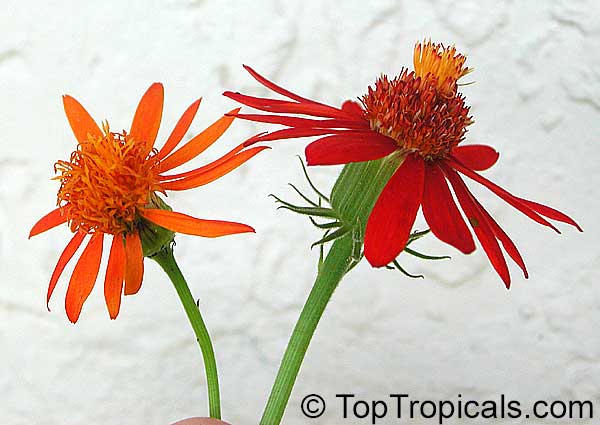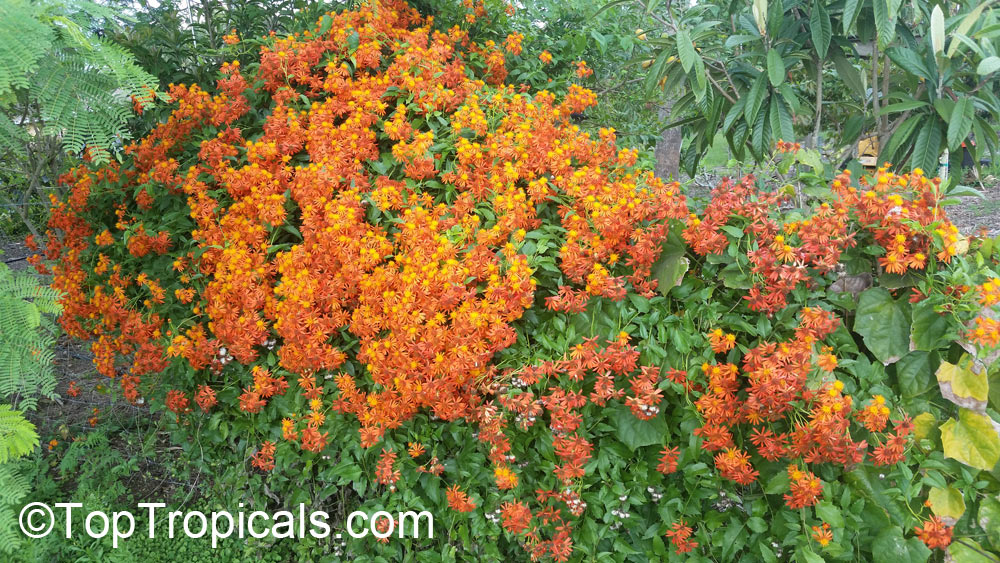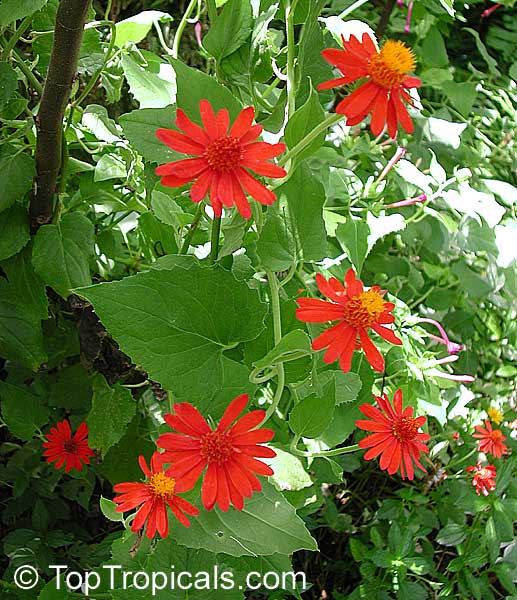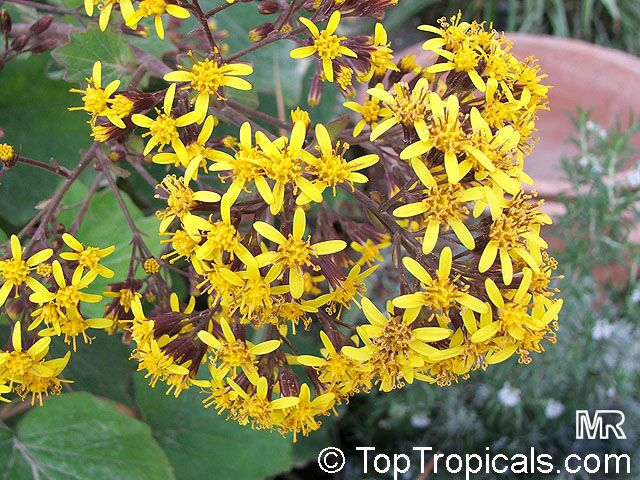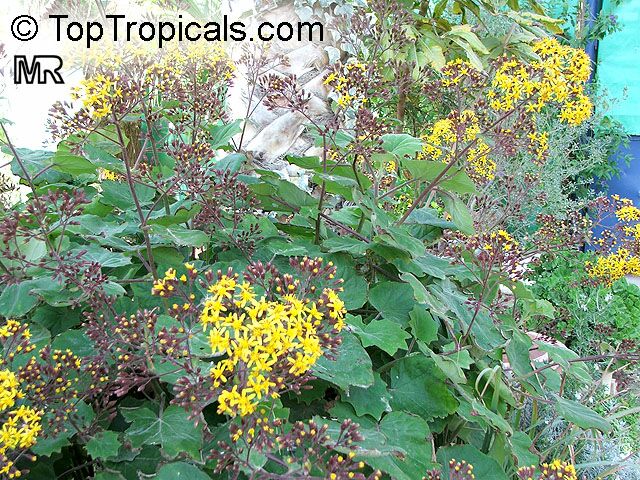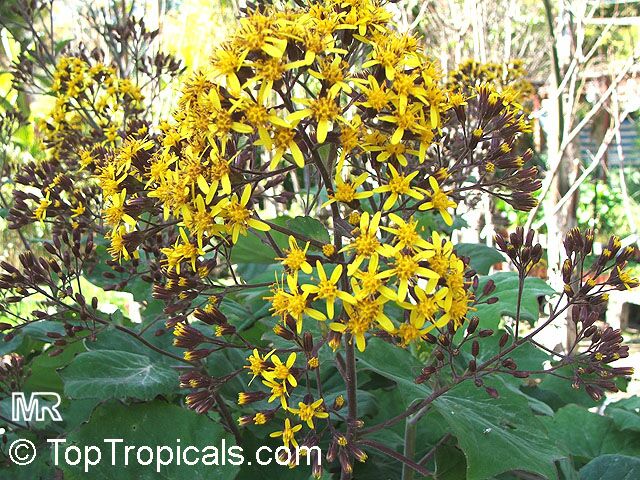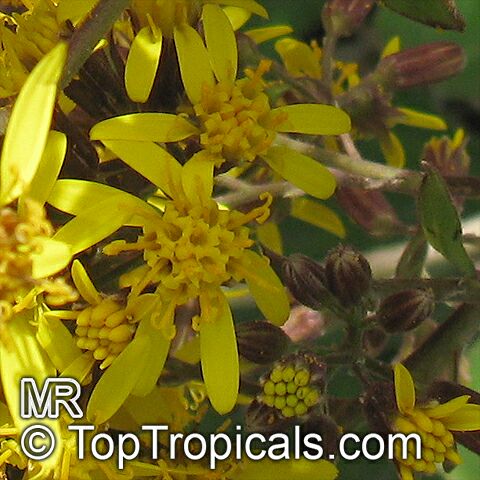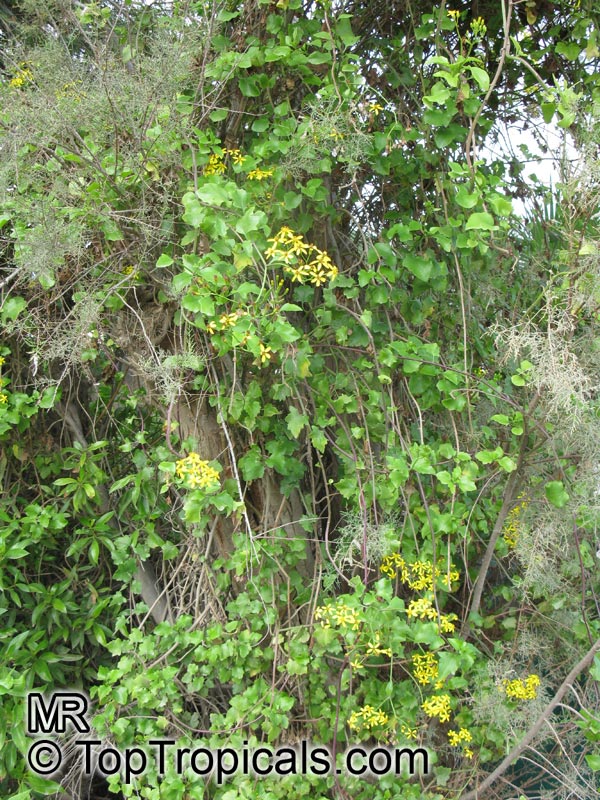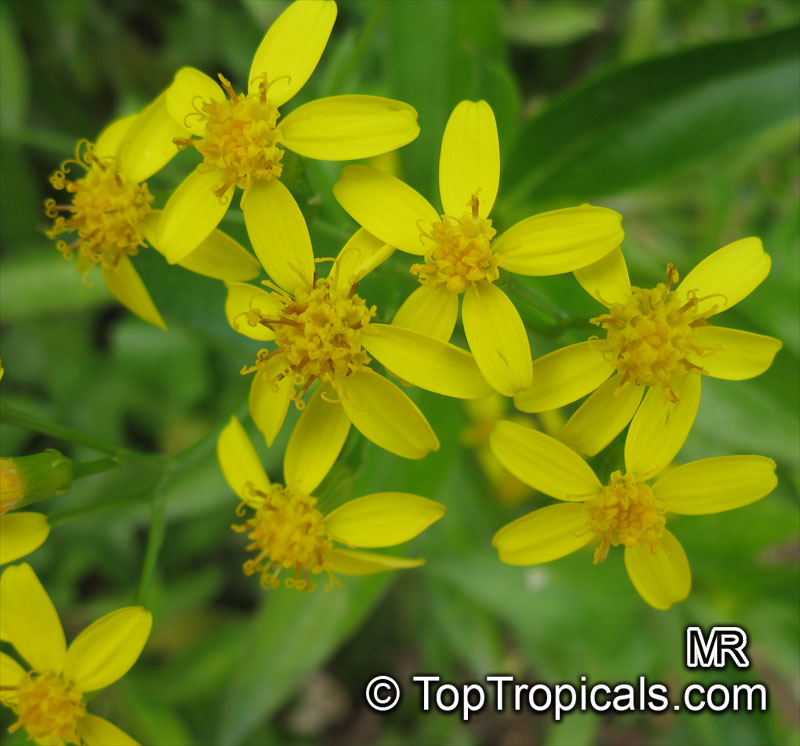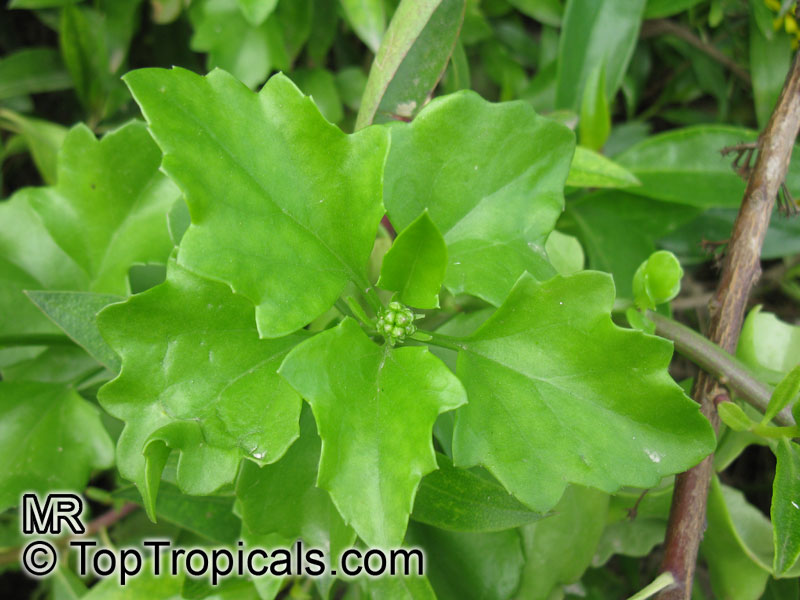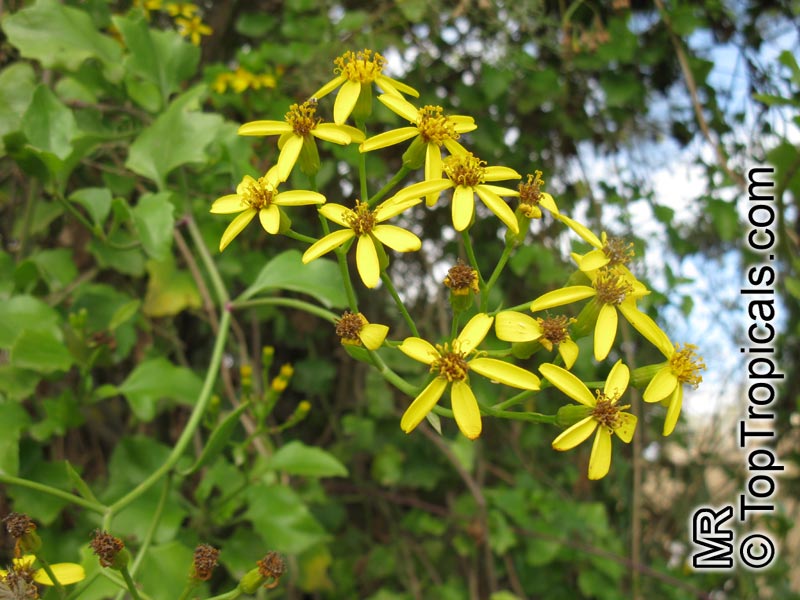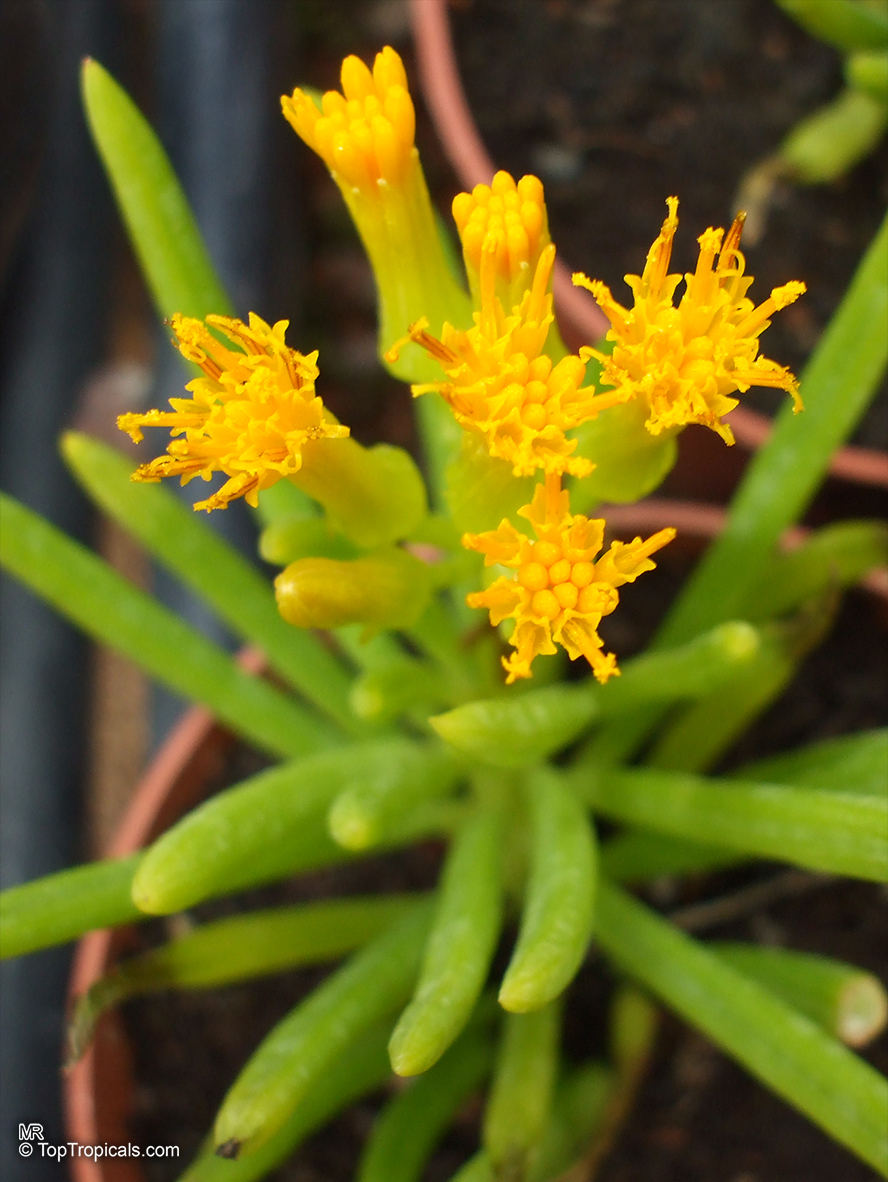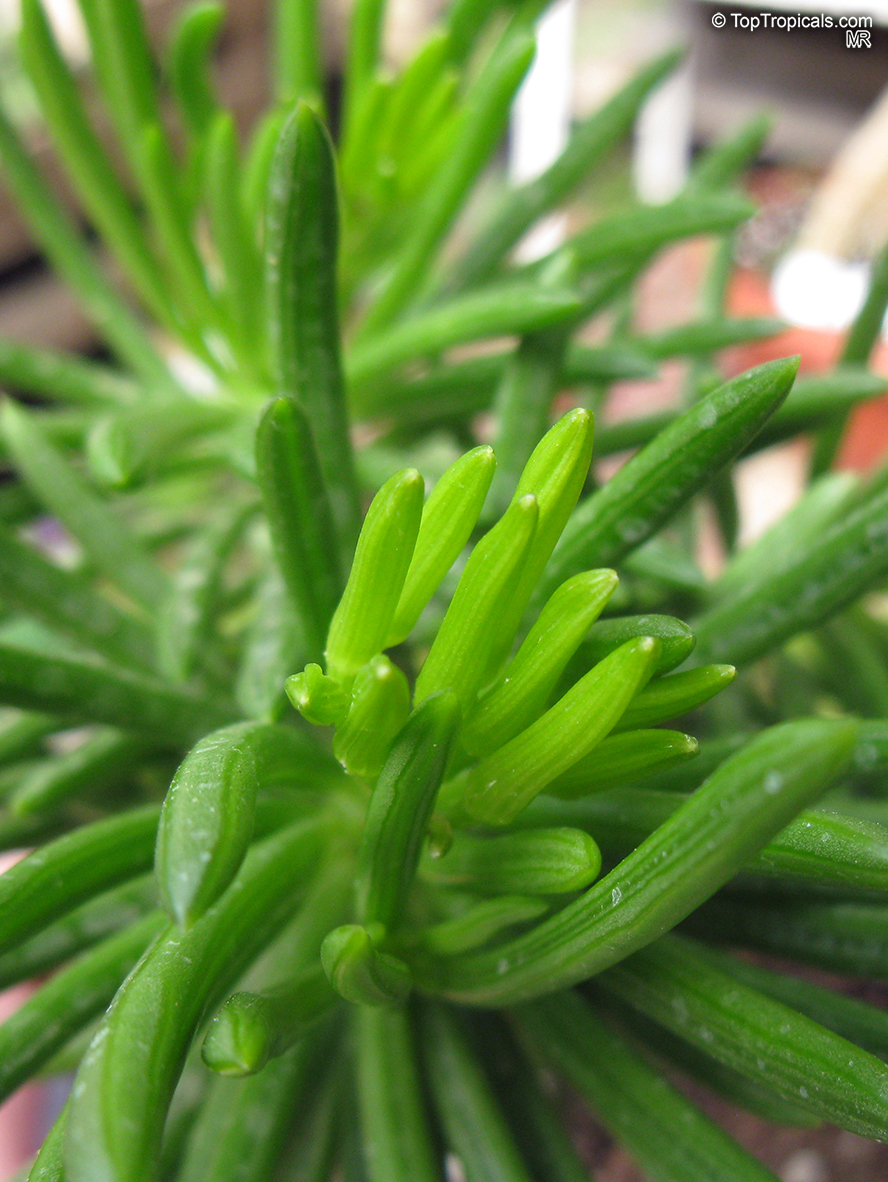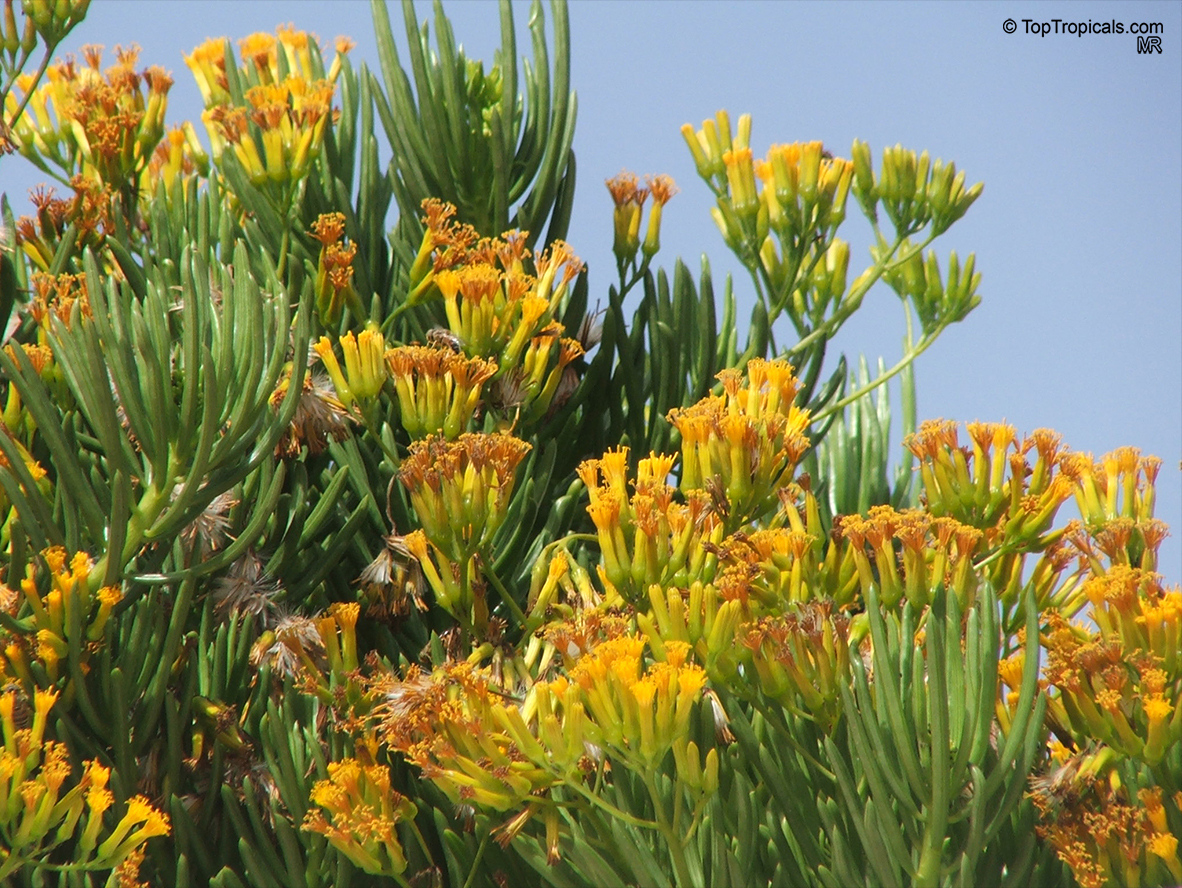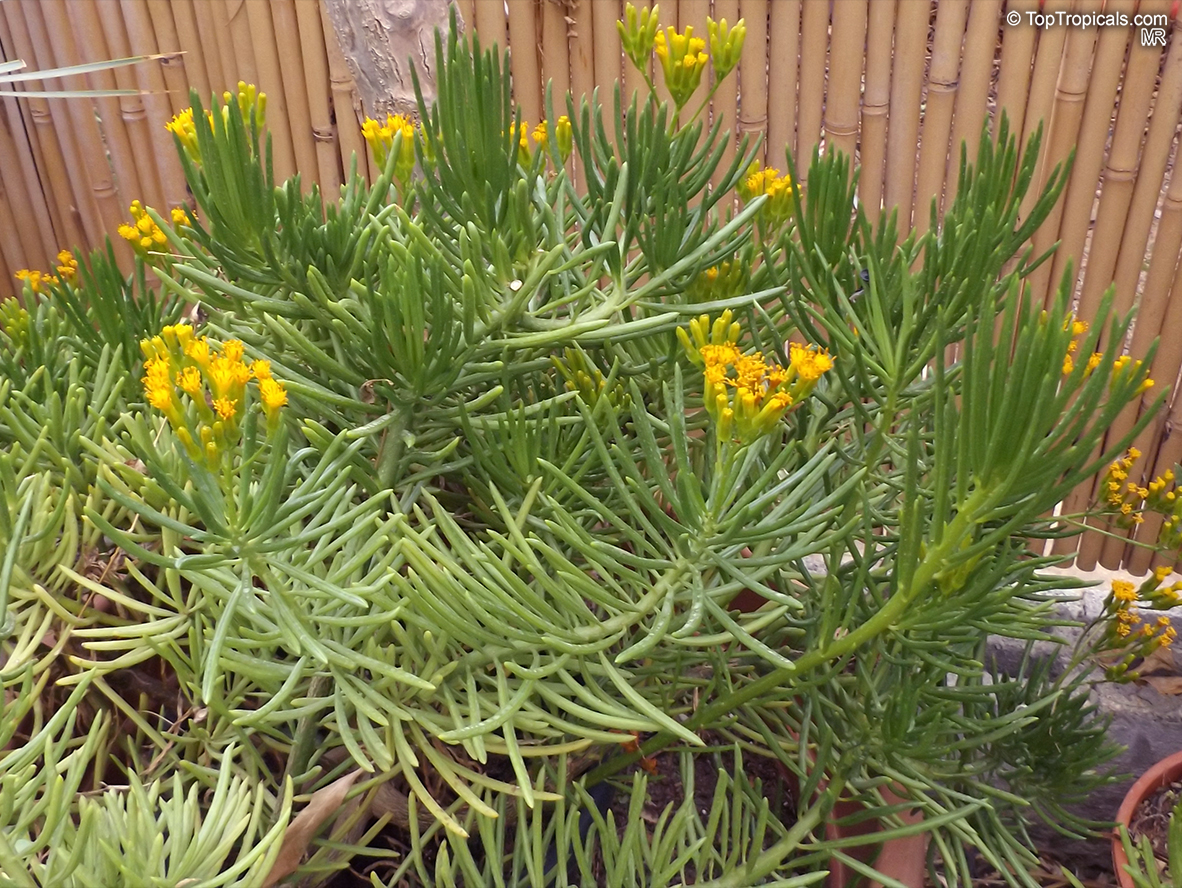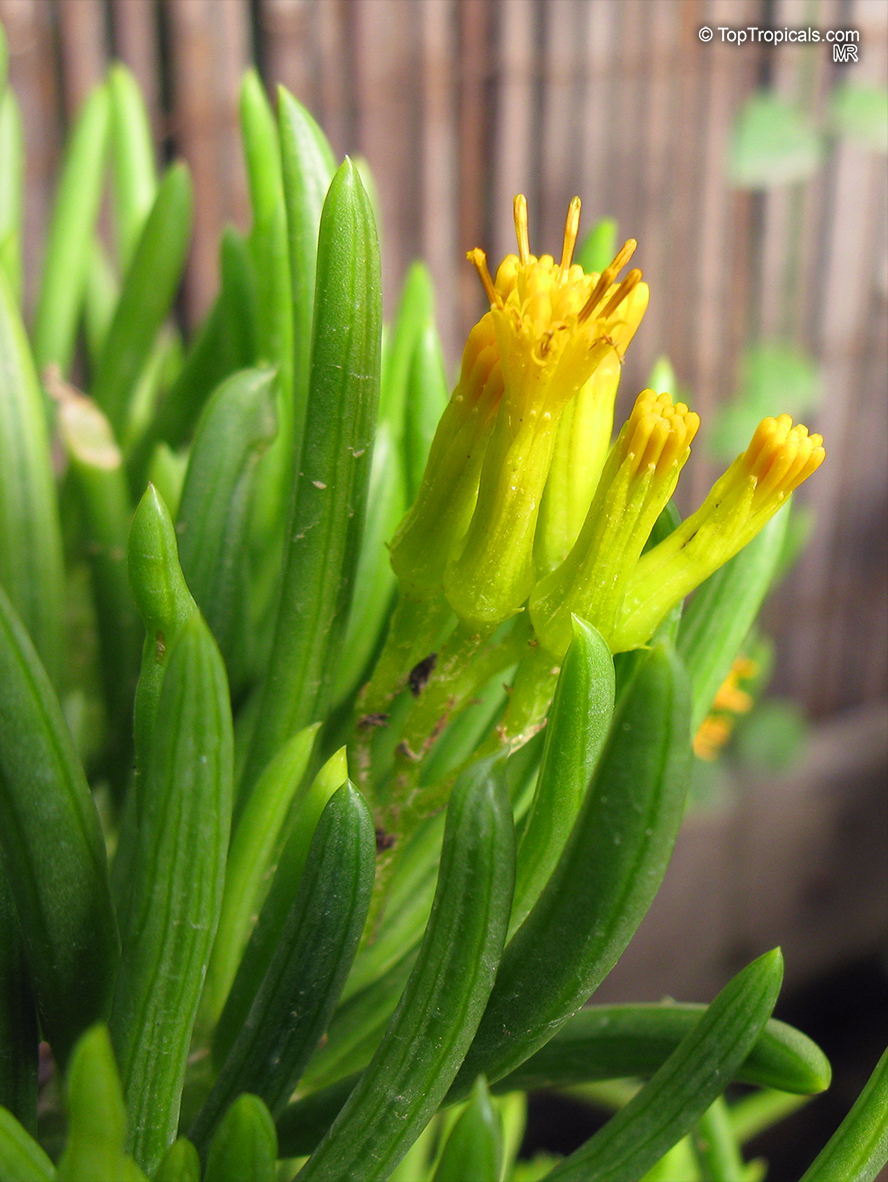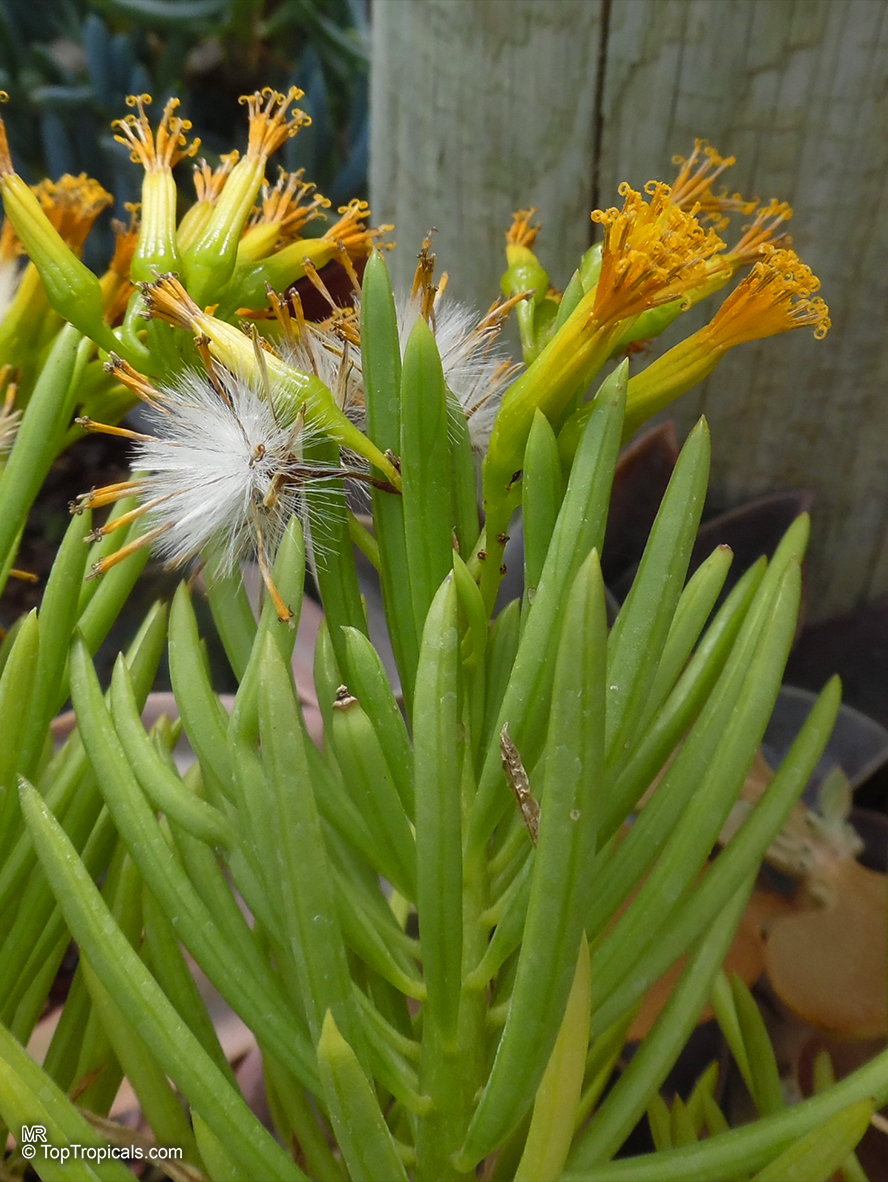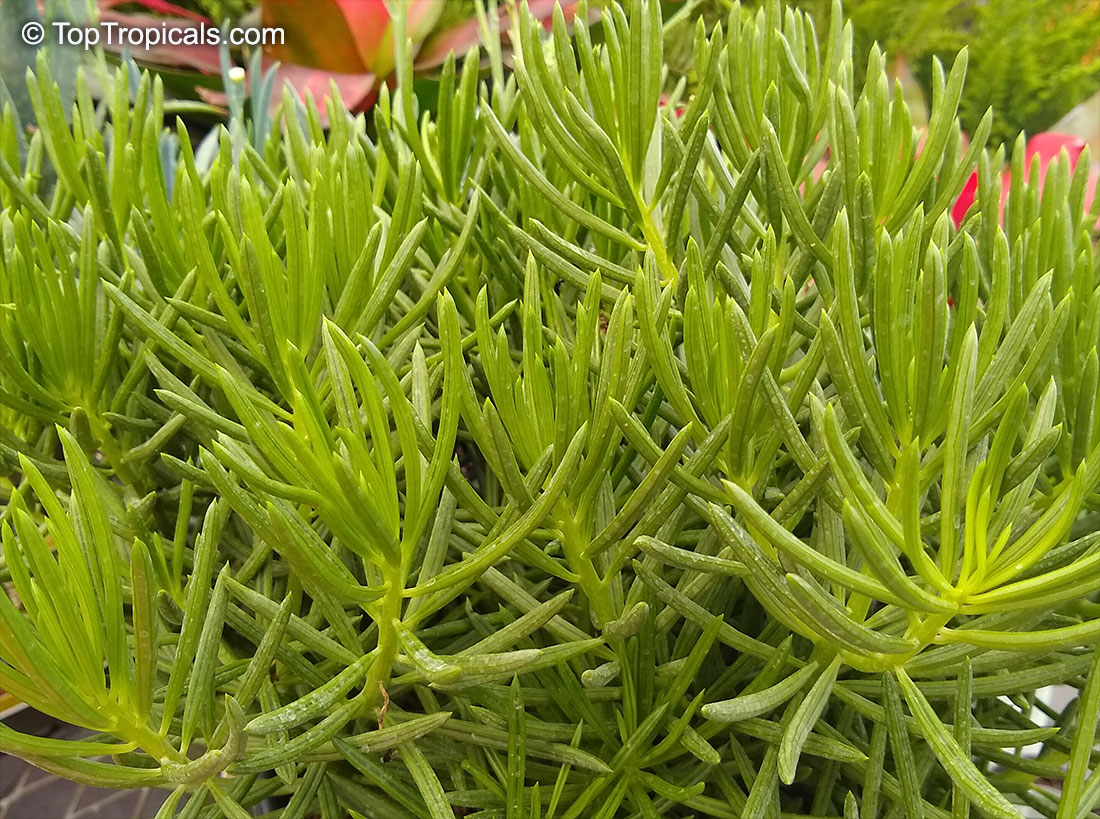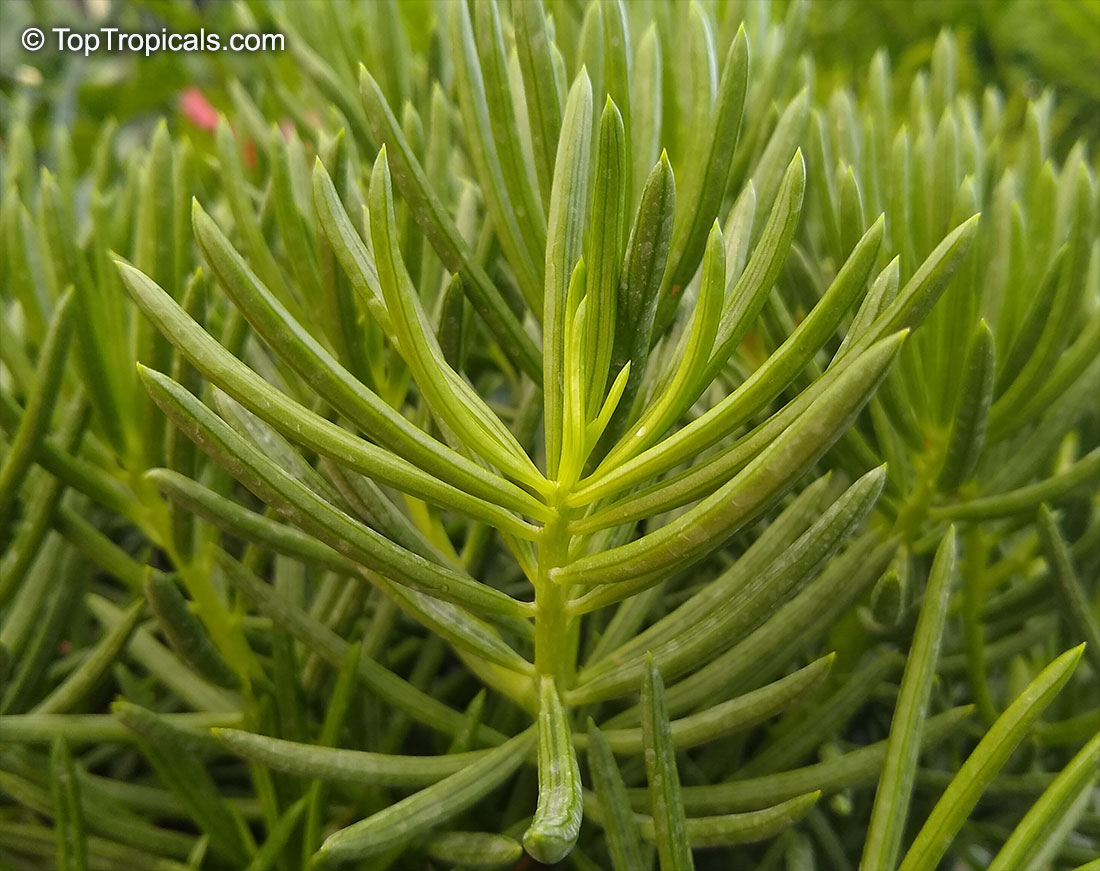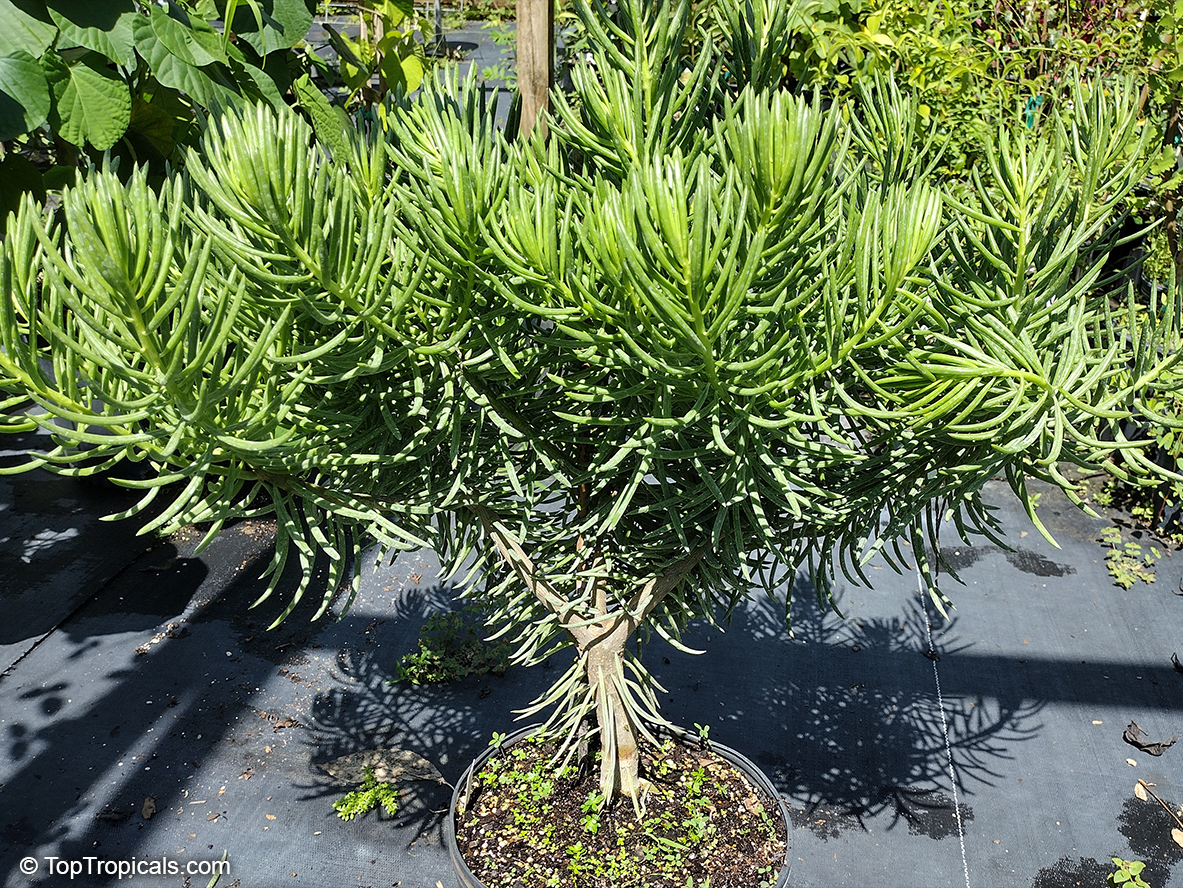Senecio - Plant Encyclopedia Results
Top Tropicals Plant Encyclopedia
| Number of plants found: 20 | Next | 
|
Go to page: | 1 | 2 |
Botanical names: Curio articulatus, Senecio articulatus, Kleinia articulata
Common names: Hot Dog Cactus, Candle Plant
Family: Asteraceae
Origin: South Africa





Senecio articulatus has fat cylindrical stems with periodic constrictions, giving an impression of sausage-links. These are decoratively enhanced by reddish-purple markings. The notched and dissected leaves are a bright green, sometimes flushed with purple.
Botanical names: Curio herreanus, Senecio herreianus
Common names: Gooseberry, String of Beads
Family: Asteraceae
Origin: South West Africa




These species are leafy succulents, in that they store large amounts of water in their leaves (as opposed to stems as do the cacti) and can withstand long periods of drought. Gooseberry leaves are football shaped and about 3/8 inch long. The unique shapes of the fleshy leaves greatly reduce the surface area exposed to the hot and dry environment, so they lose a bare minimum of the precious water extracted from the soil. The reduced surface area, however, limits the amount of the sun's energy the plants can absorb for photosynthesis. Nature's way of compensating for this limited external surface area is to have a 'window' or slit of transparent tissue in each leaf that allows light to enter and be absorbed by the photosynthetic cells lining the inside. Therefore, light absorption occurs on the outer surface as well as the inner surface. This allows the plant to produce a sufficient amount of food by photosynthesis while conserving its water. The central core of each leaf is composed of clear, non-pigmented water storage cells. See Senecio rowleyanus.
Botanical names: Curio rowleyanus, Senecio rowleyanus
Common names: String of pearls, String of peas, Bead Plant
Family: Asteraceae
Origin: South Africa






Curio rowleyanus (Senecio rowleyanus), also called String of pearls, is an excellent groundcover for dry rock gardens or for edging garden paths. It is a low-growing plant, and can cope with a variety of light exposures, from full sun to semi-shade. It has attractive white and off-white flowers that are highly fragrant, and its small succulent leaves are low maintenance and thrive in dry, sandy conditions. In the right environment, this plant can quickly spread and form a beautiful, green tangle that adds texture and scent to the landscape.
Plant is native to South Africa, and is hardy in USDA Zone 9-11. Plants in colder climates should be grown in pots and brought inside during the winter months. Potted plants require well-drained soil. Water the plant when the soil is dry to the touch, reducing watering even further during winter when the plant is resting.
Overall, Curio rowleyanus is a great choice for those looking for an aromatic, drought-tolerant groundcover for gardens or containers. With its colourful and fragrant flowers combined with its low-maintenance attributes, this plant is sure to add interest to any outdoor space.
Botanical names: Kleinia neriifolia, Senecio kleinia
Common name: Verode
Family: Asteraceae
Origin: Canary Islands





Botanical names: Kleinia pendula, Senecio pendulus
Common name: Tapeworm Plant
Family: Asteraceae
Origin: Africa





Kleinia pendula has prostrate marbled succulent stems that arch over and touch the soil where they root, sending out more stems. The inflorescence is a showy red pom-pom of many tiny flowers.
Botanical names: Kleinia stapeliiformis, Senecio stapeliiformis
Common name: Pickle Plant
Family: Asteraceae





Botanical names: Pseudogynoxys chenopodioides, Senecio confusus
Common names: Mexican Flame Vine, Orangeglow Vine
Family: Asteraceae
Origin: Mexico












A great plant for beginners! Very fast growing, drought resistant, seldom bothered by pests and minimum care is rewarded with impressive floral displays! This plant is attractive to bees, butterflies and birds. It is a fairly rampant, warm climate climber with thick evergreen leaves which deep green color provides a rich background for the brilliant flowers. It covers itself in brilliant bright orange daisy-like flowers about 1 inch in diameter, borne in small clusters. See Article about Mexican Flame Vine
Recommended Fertilizer: SUNSHINE Megaflor - Bloom Nutrition Booster
Recommended Fertilizer: SUNSHINE Megaflor - Bloom Nutrition Booster
Botanical names: Roldana petasitis, Senecio petasitis
Common names: Velvet Groundsel, California Geranium
Family: Asteraceae
Origin: Mexico






Roldana petasitis, or Velvet Groundsel, is a small shrub native to Mexico that typically grows between 2 and 5 feet tall. It has large round leaves tinged in purple and are hairy to the touch. When in bloom, the shrub produces bunches of yellow and orange daisy looking flowers. The flowers will then produce seeds in profusion which will be wind borne and can make it invasive if not properly managed.
When caring for Roldana petasitis, it needs to be situated in full sun or semi-shade and receive regular water. It is recommended to prune it hard after it blooms to maintain its shape and size. It is grown in USDA Zone 9-11 and can survive in cold regions when planted in a pot. If grown in a pot, it should be positioned in full sun and watered regularly as to not let the soil dry out. It should also be fertilized on a monthly basis to ensure healthy growth.
Botanical name: Senecio angulatus
Common name: Creeping Groundsel
Family: Asteraceae
Origin: South Africa






Creeping Groundsel is a bushy climber with large clusters of sweet-scented, yellow flowers. It has bright green, squarish, somewhat succulent leaves.
Botanical name: Senecio barbertonicus
Common names: Barberton Groundsel, Succulent Bush Senecio, Lemon Bean Bush
Family: Asteraceae
Origin: South Africa






An evergreen succulent shrub of the family Asteraceae, native to Southern Africa, named after one of its native localities Barberton and is now also being cultivated for its drought resistance, clusters of sweetly scented, golden-yellow, tufted flower heads in winter and attractiveness to butterflies, the painted lady butterfly (Vanessa cardui) in particular.
| Next |  |
Use link to repeat this search:
https://toptropicals.com/cgi-bin/garden_catalog/cat.cgi?find=Senecio&search_op=and&keyword_op=and&language=e&number=10
&no_change_lang=1&user=tt&sale=1&first=0
